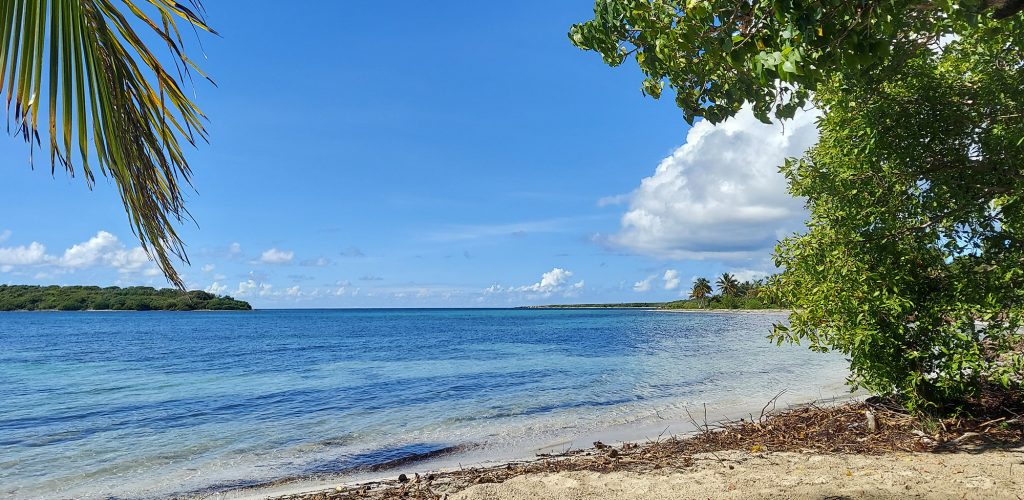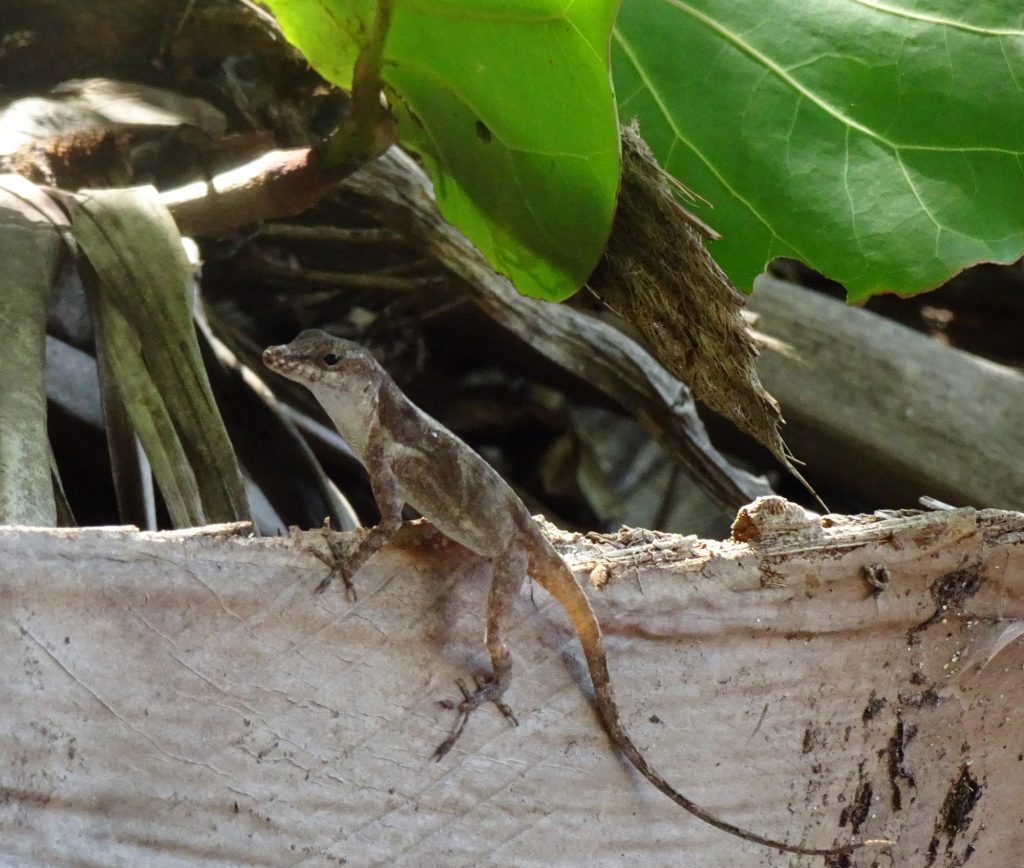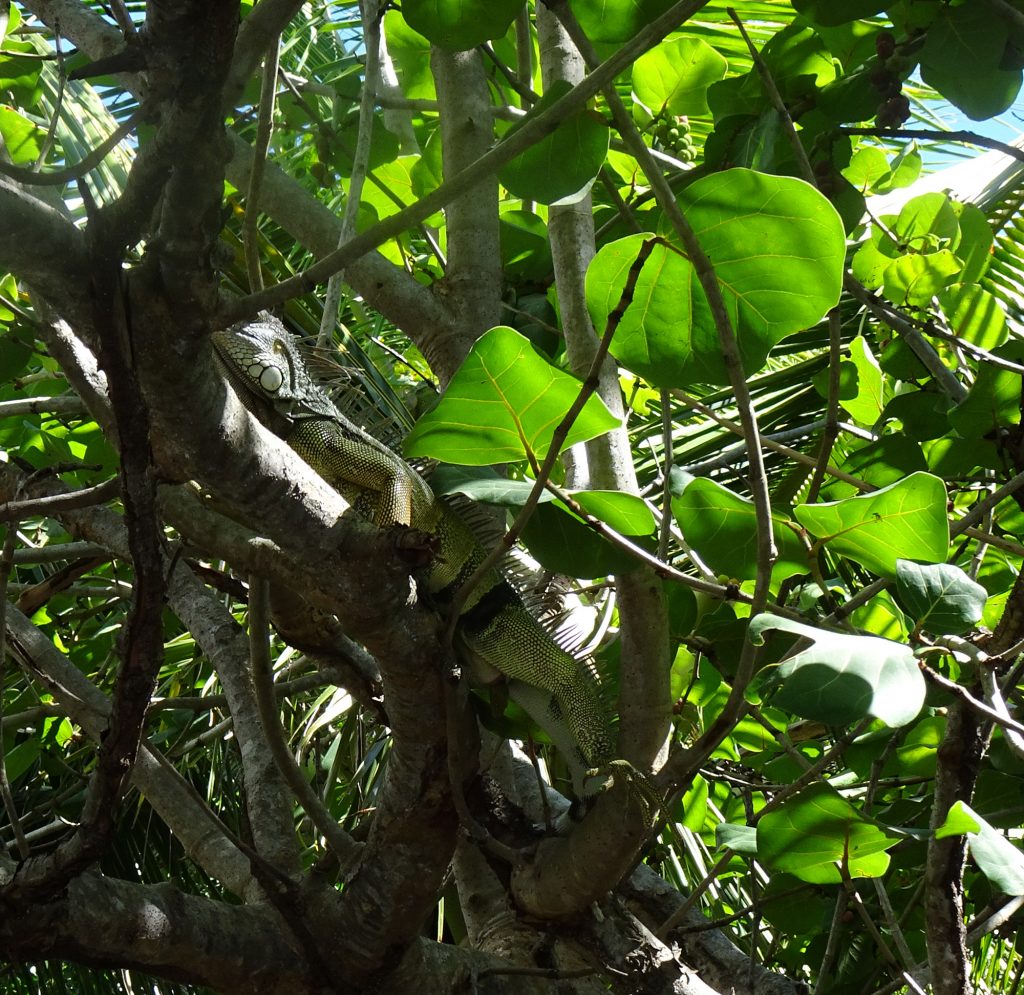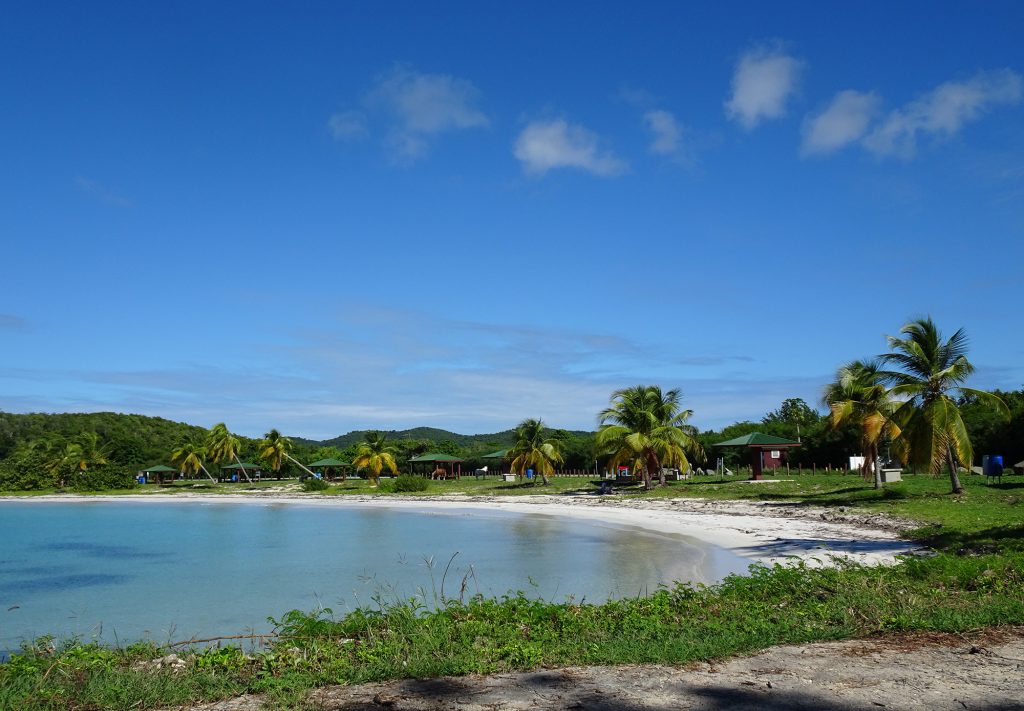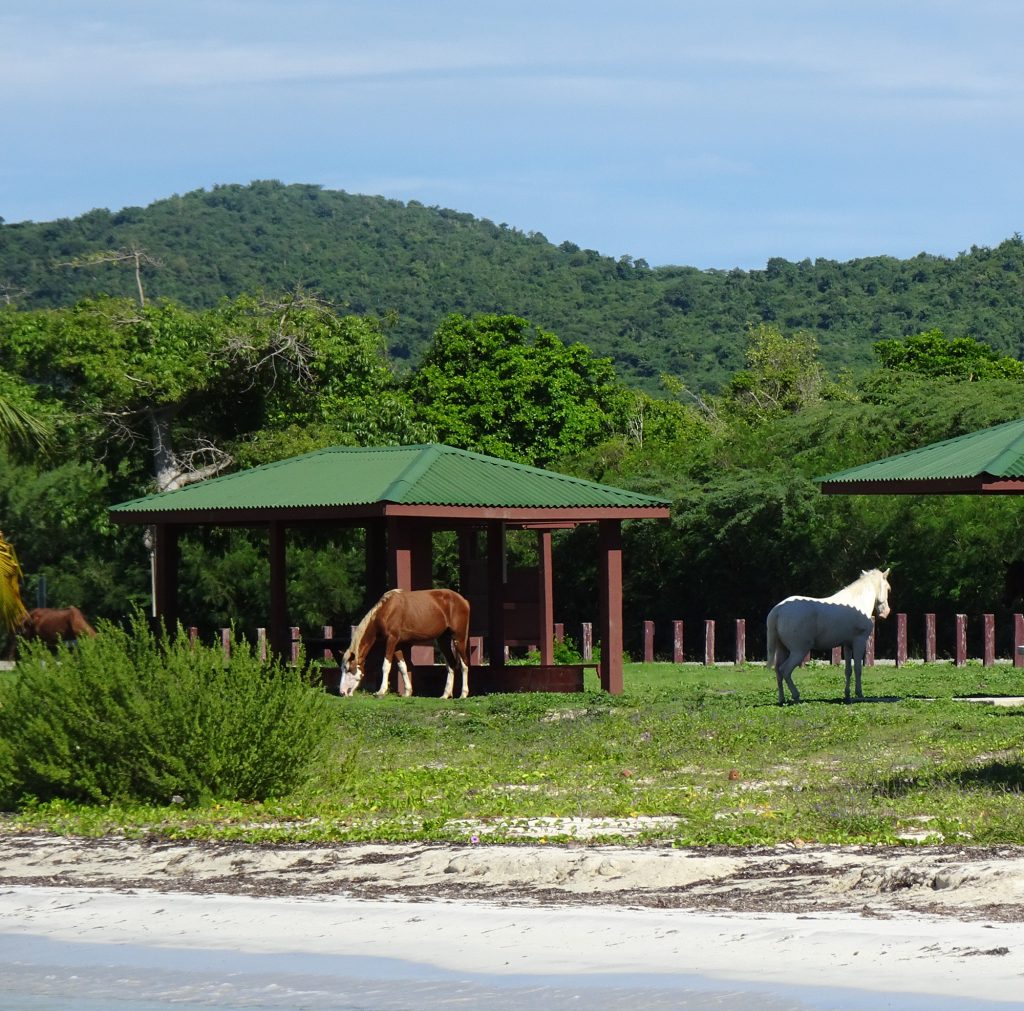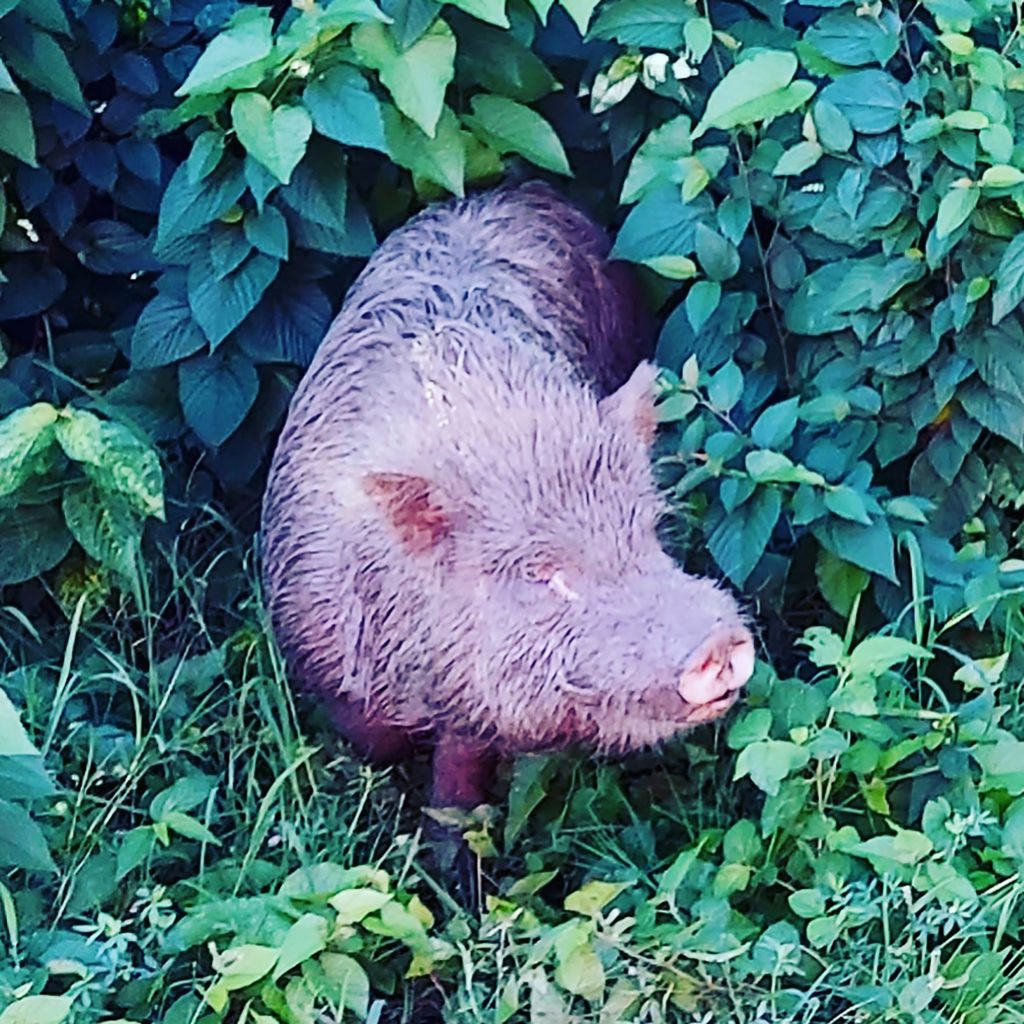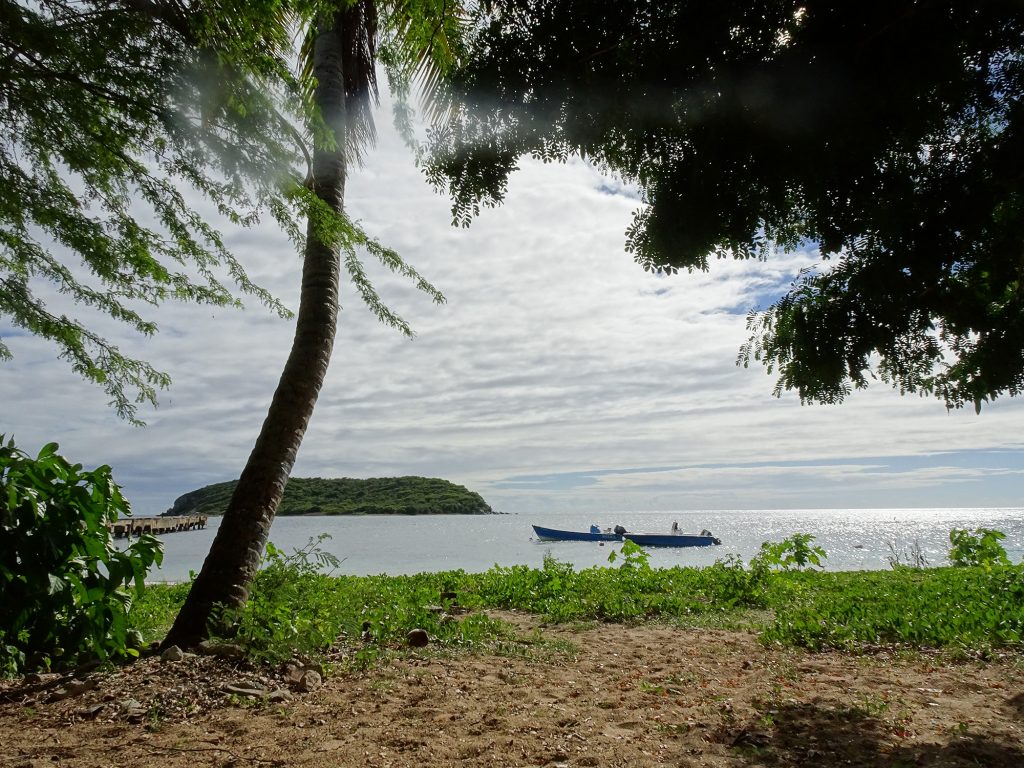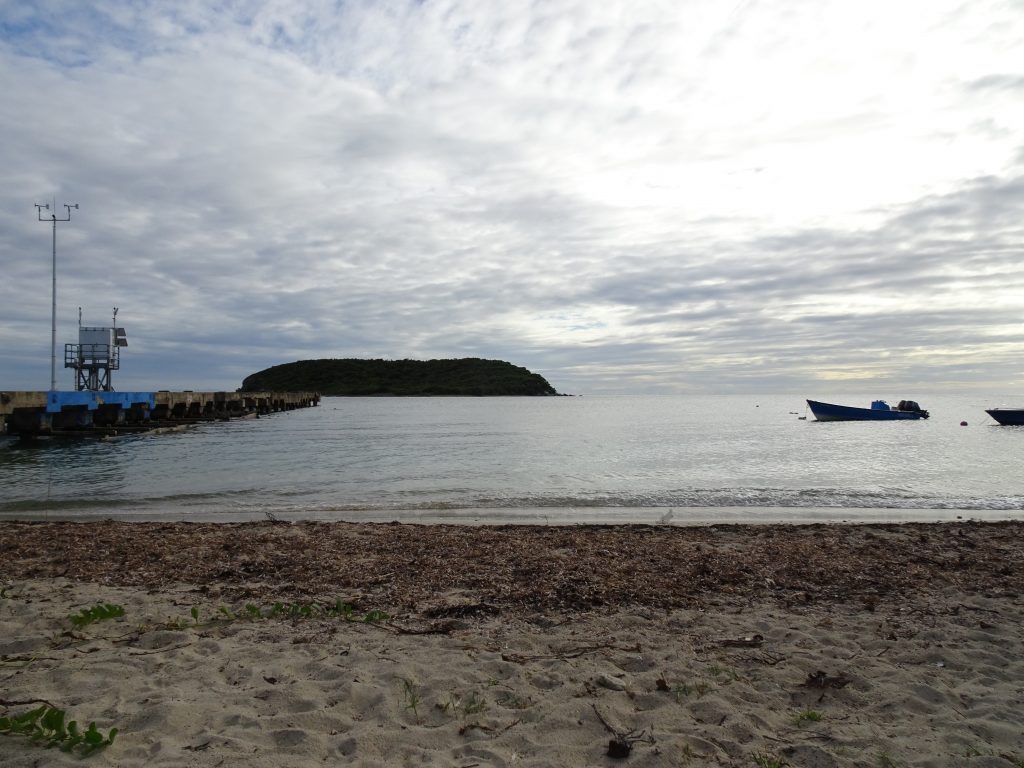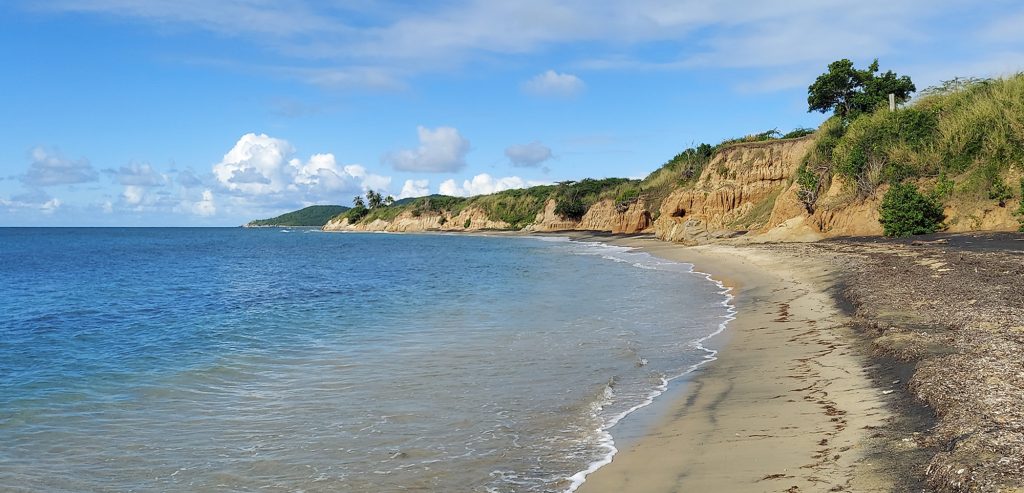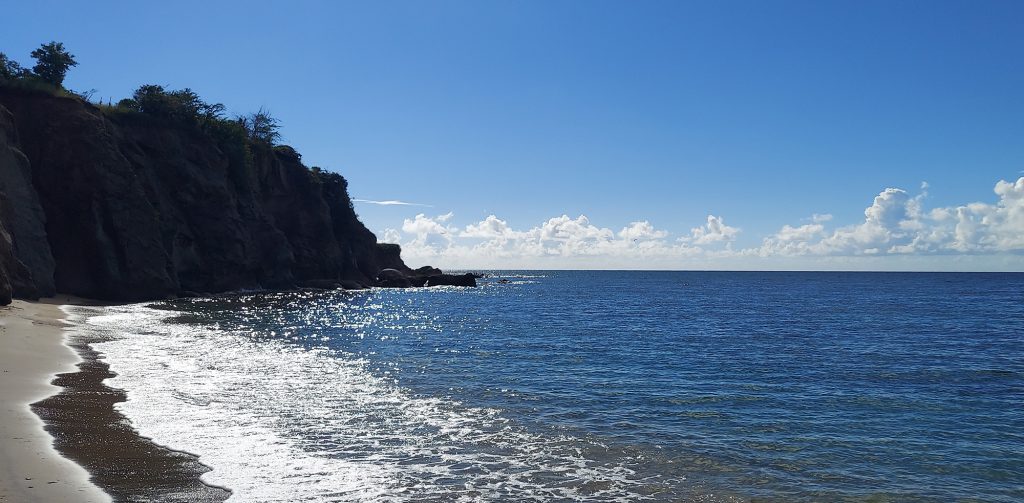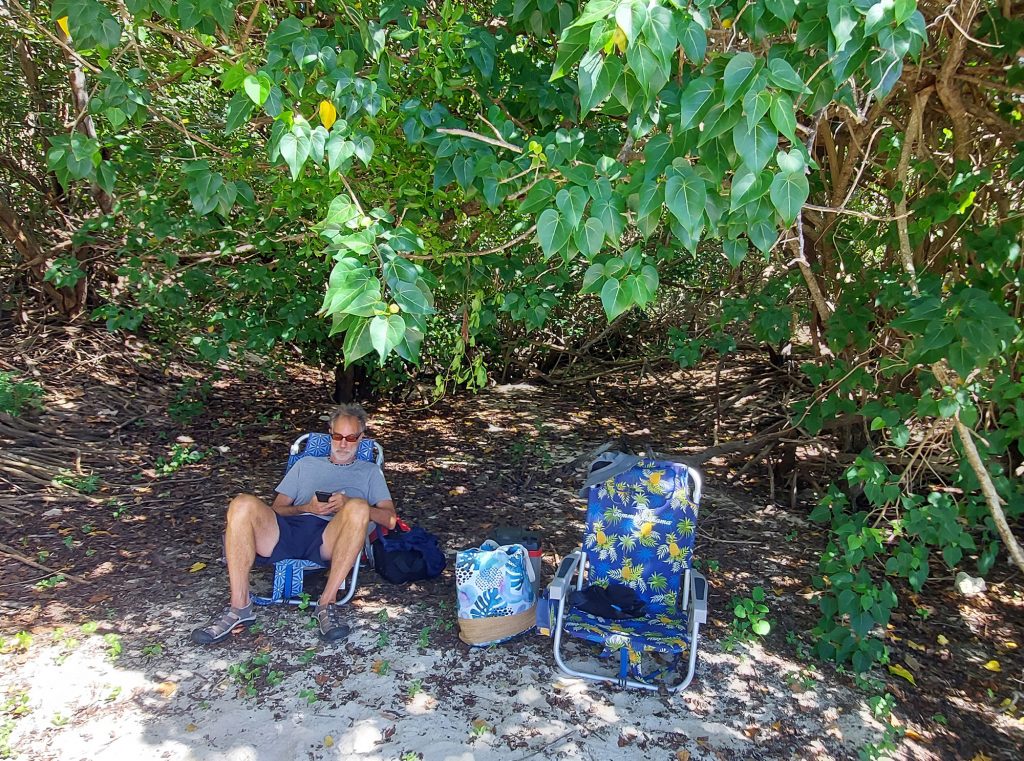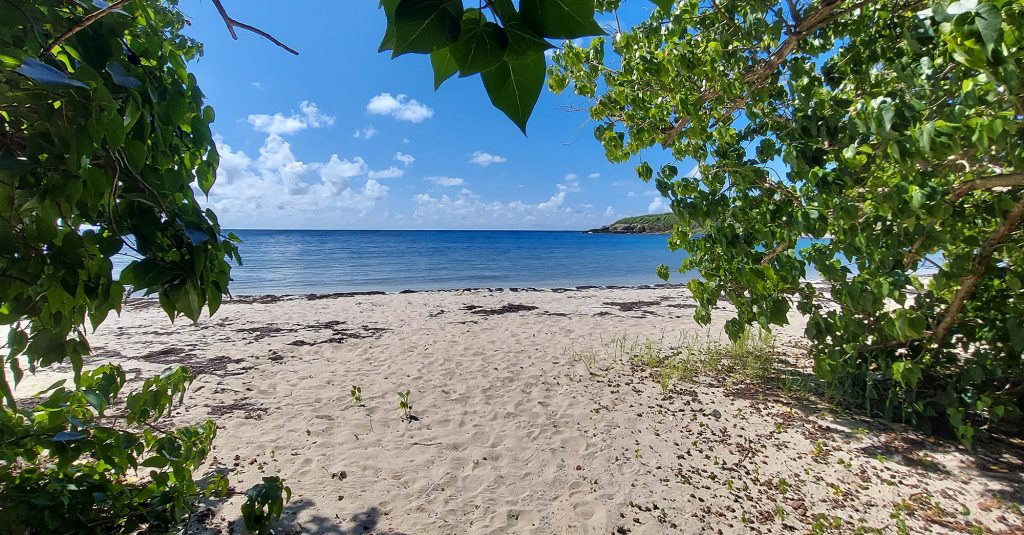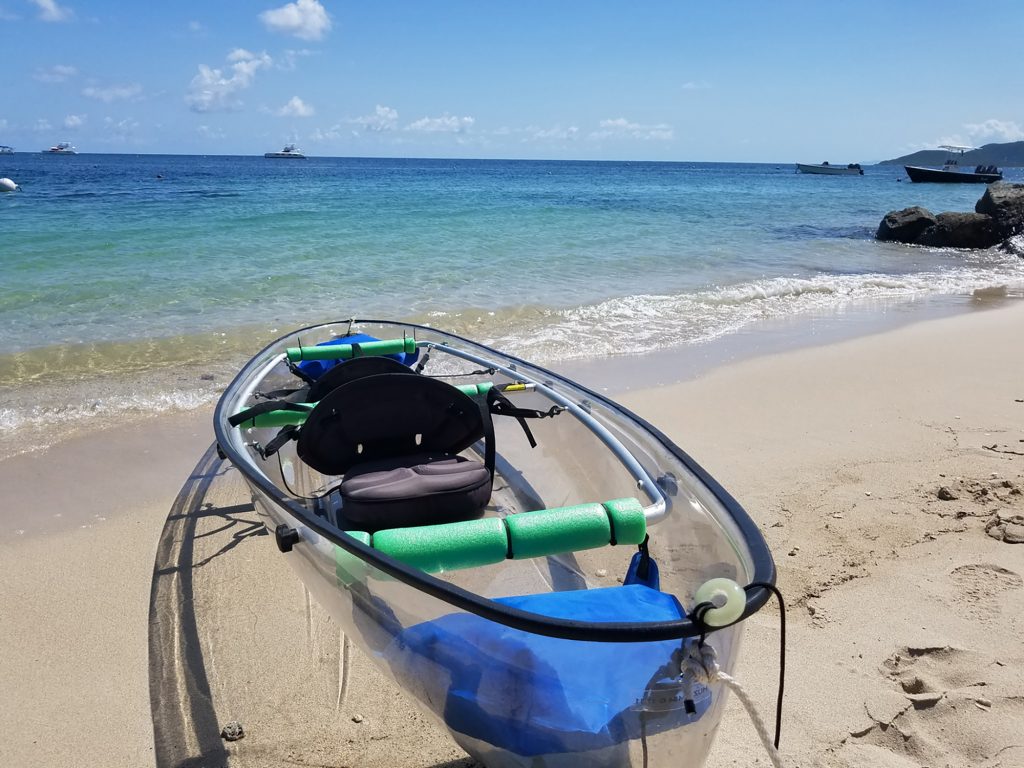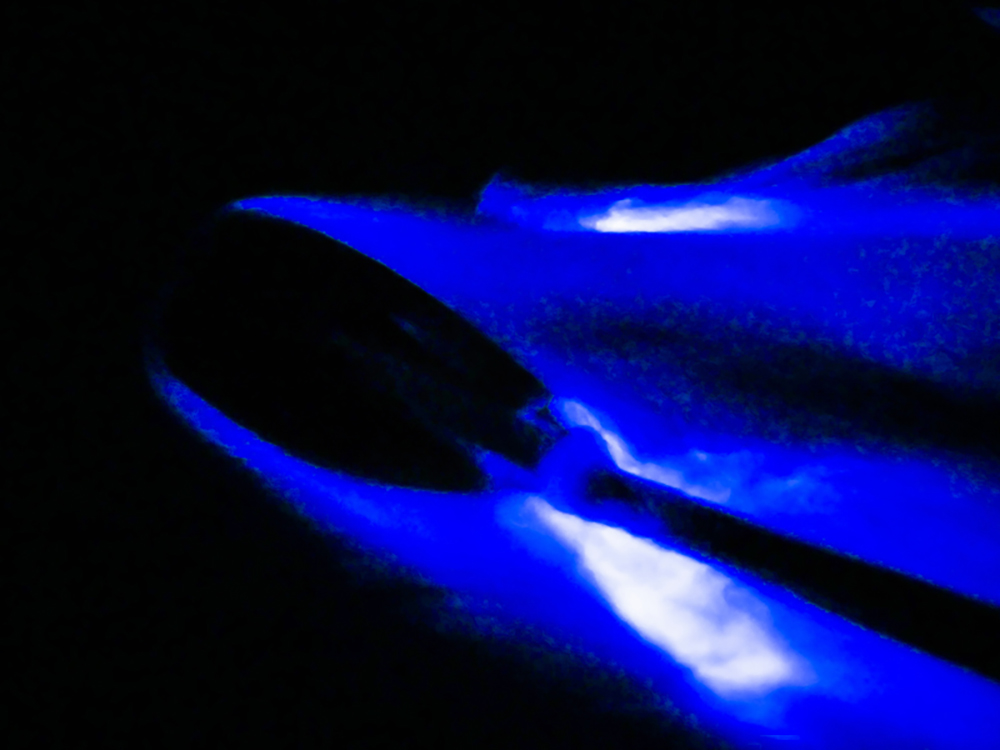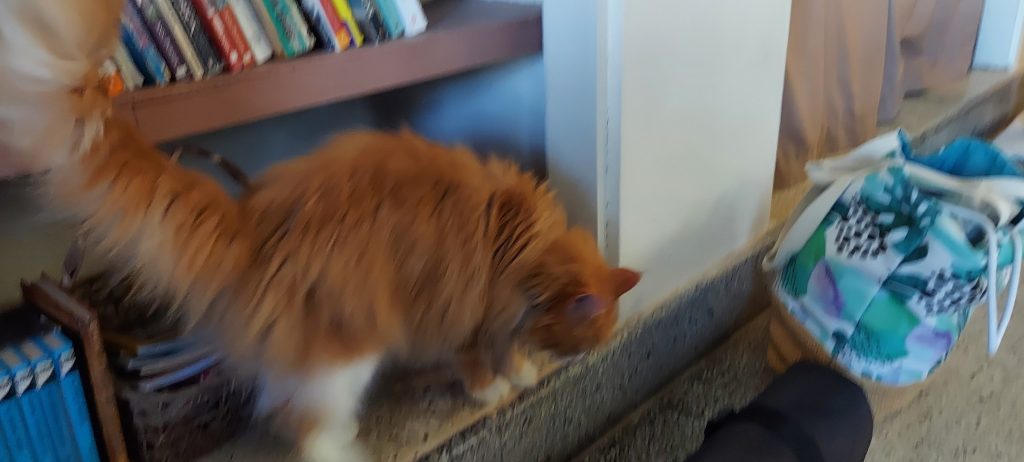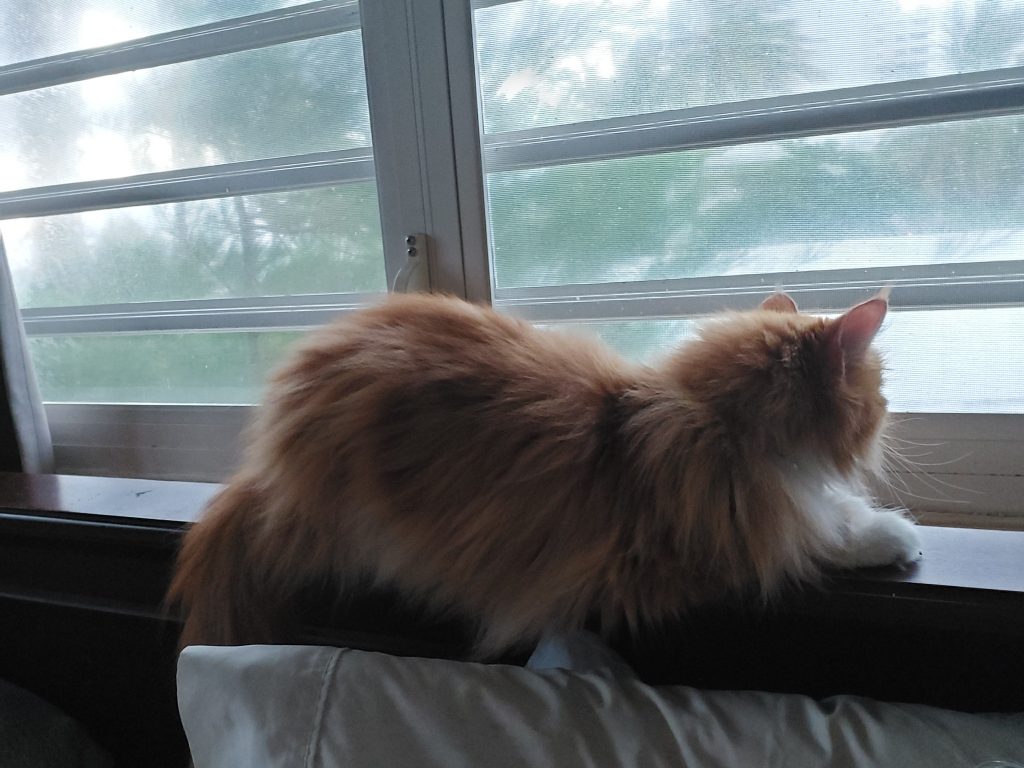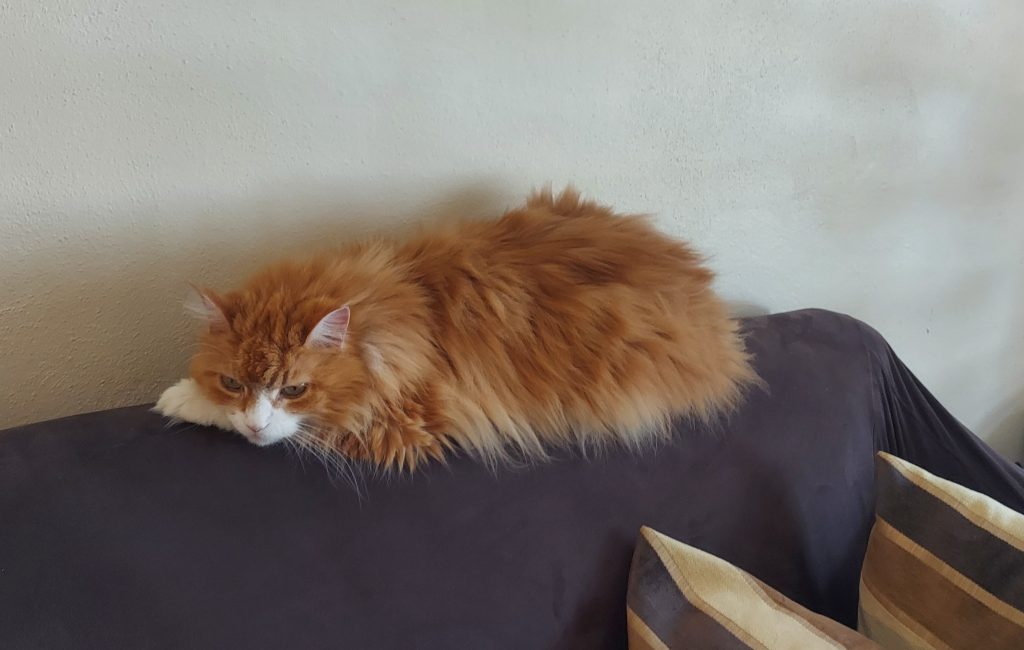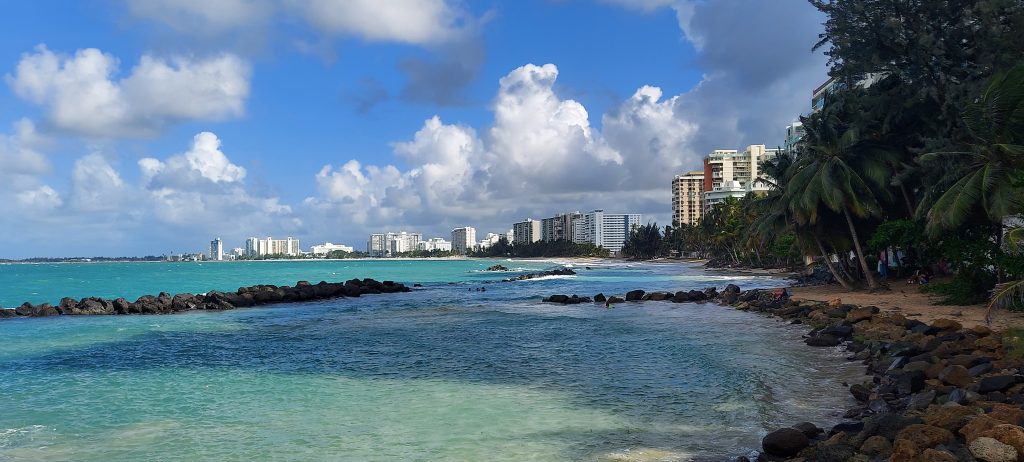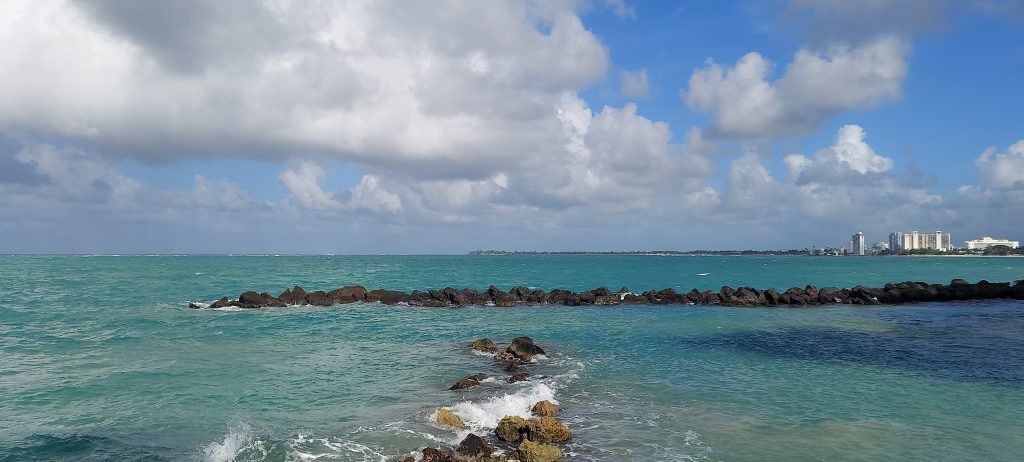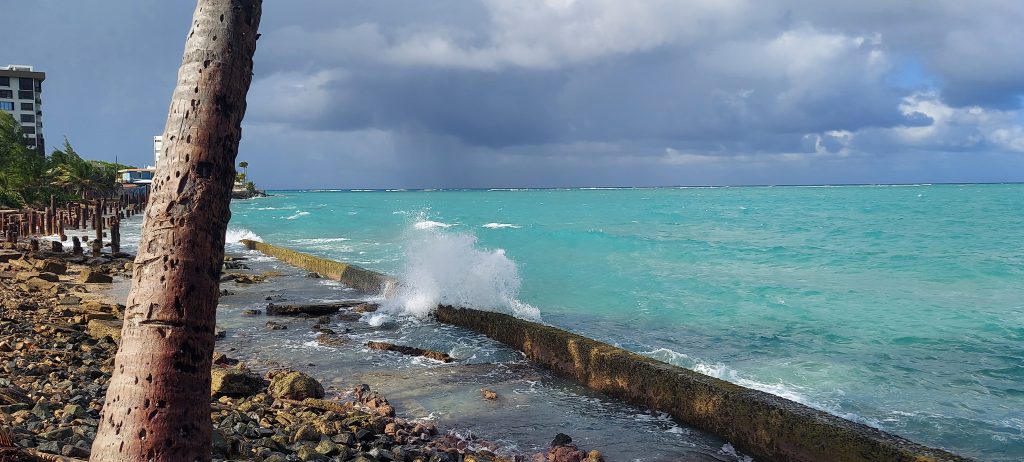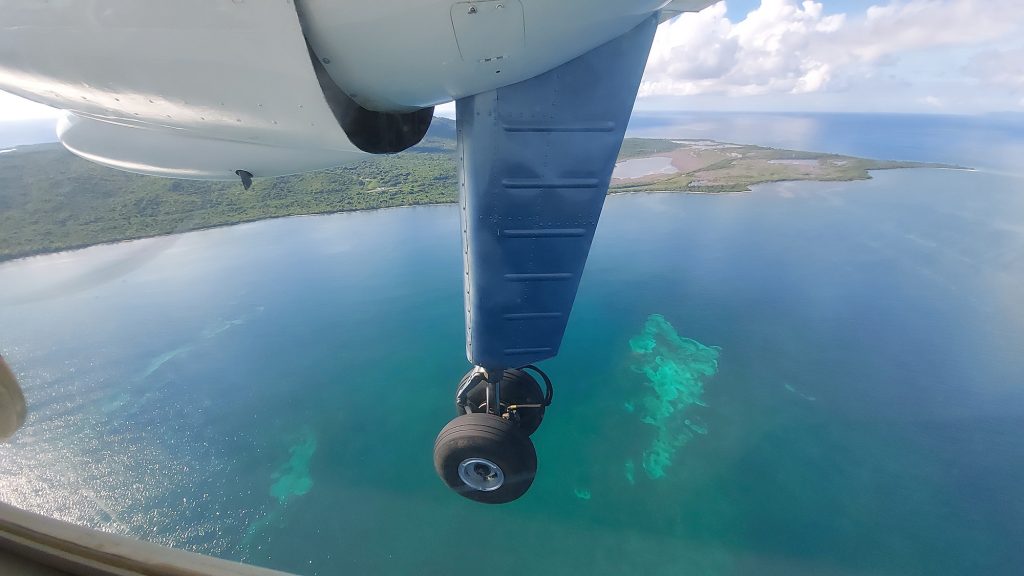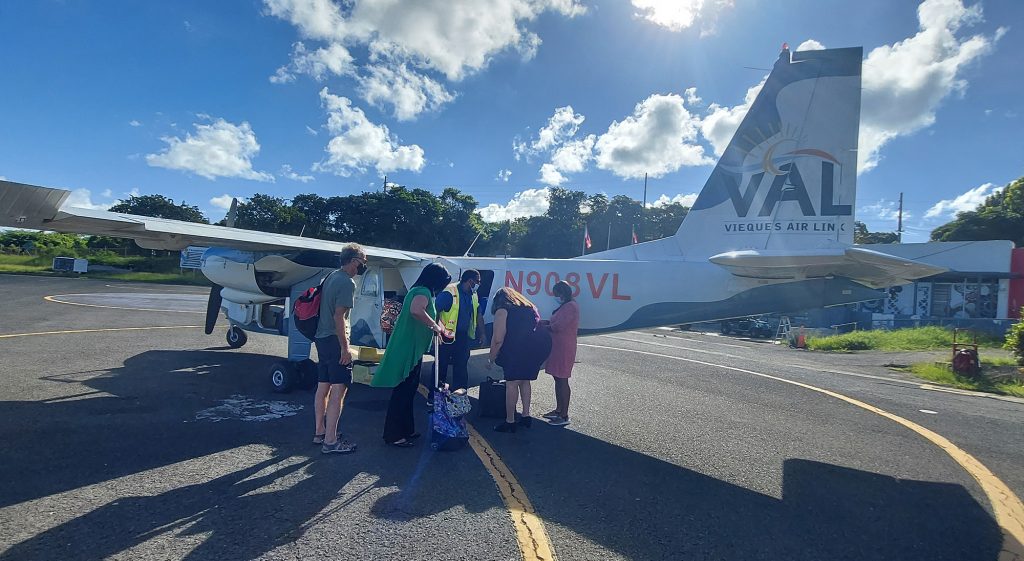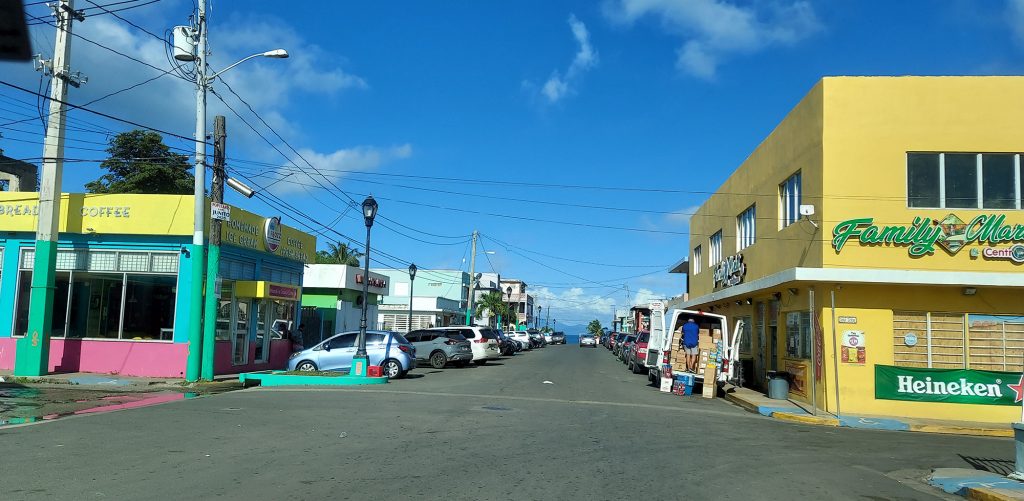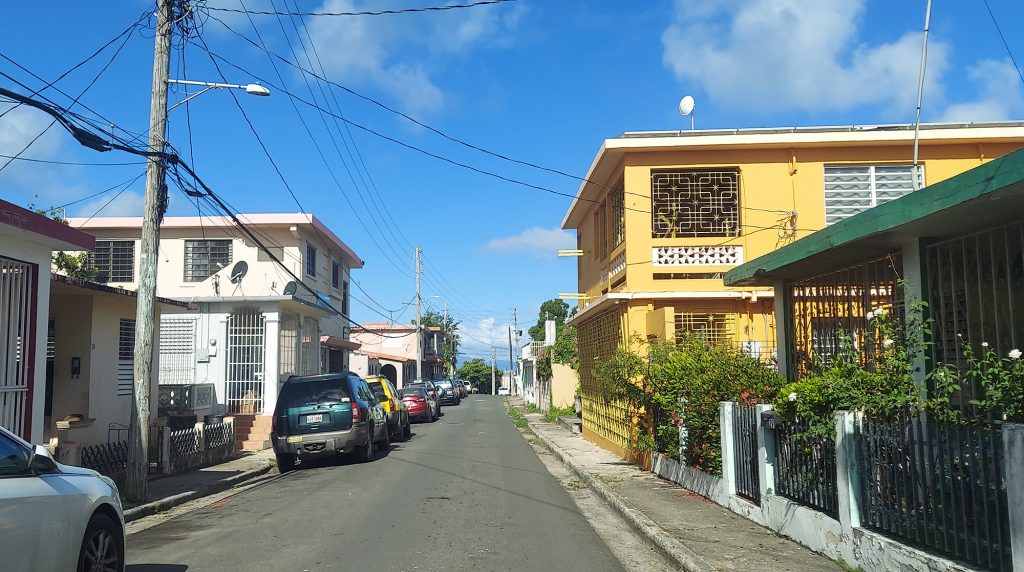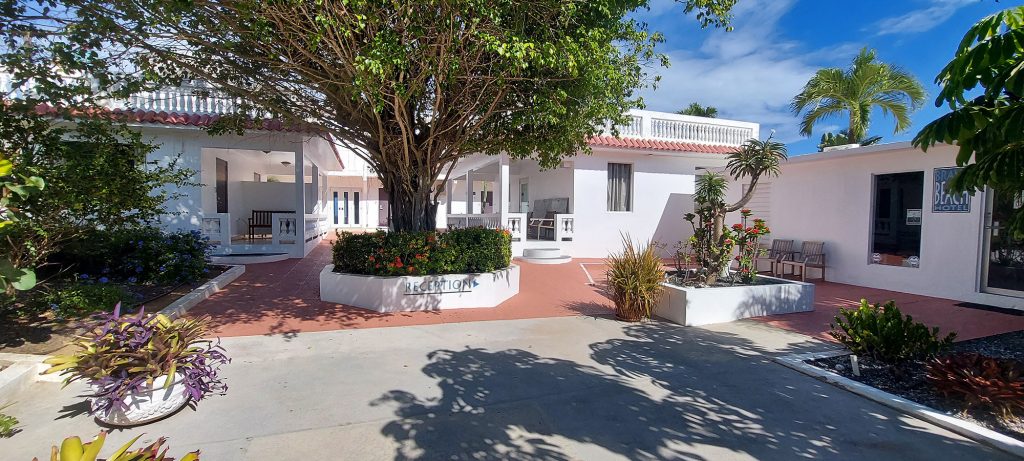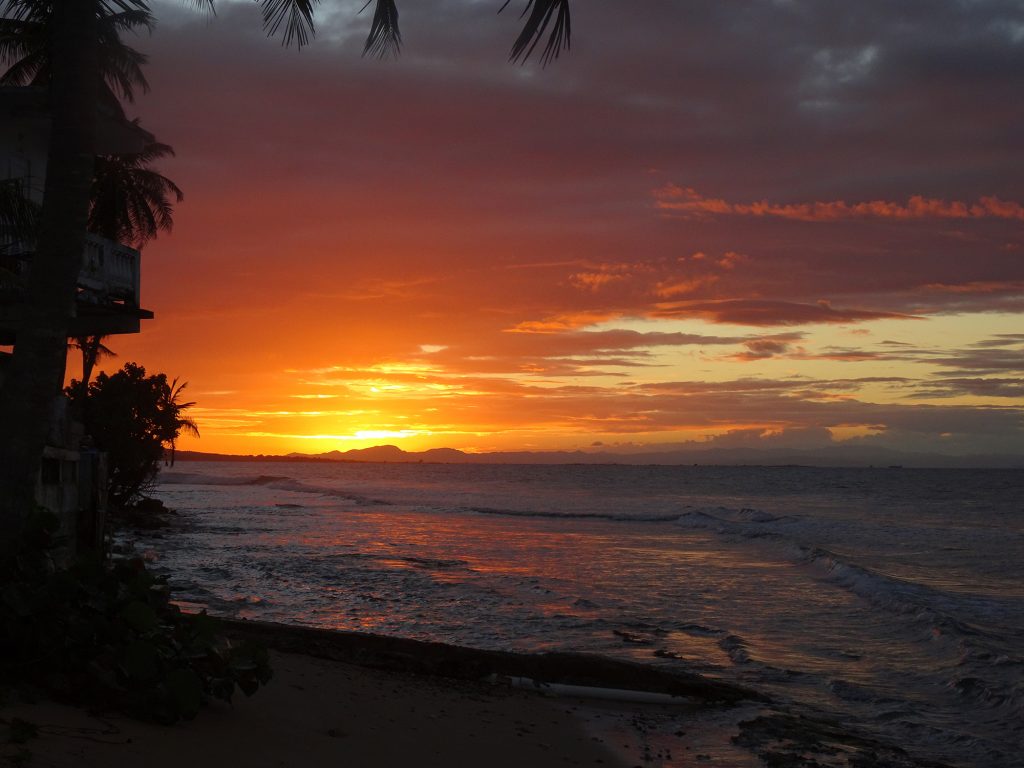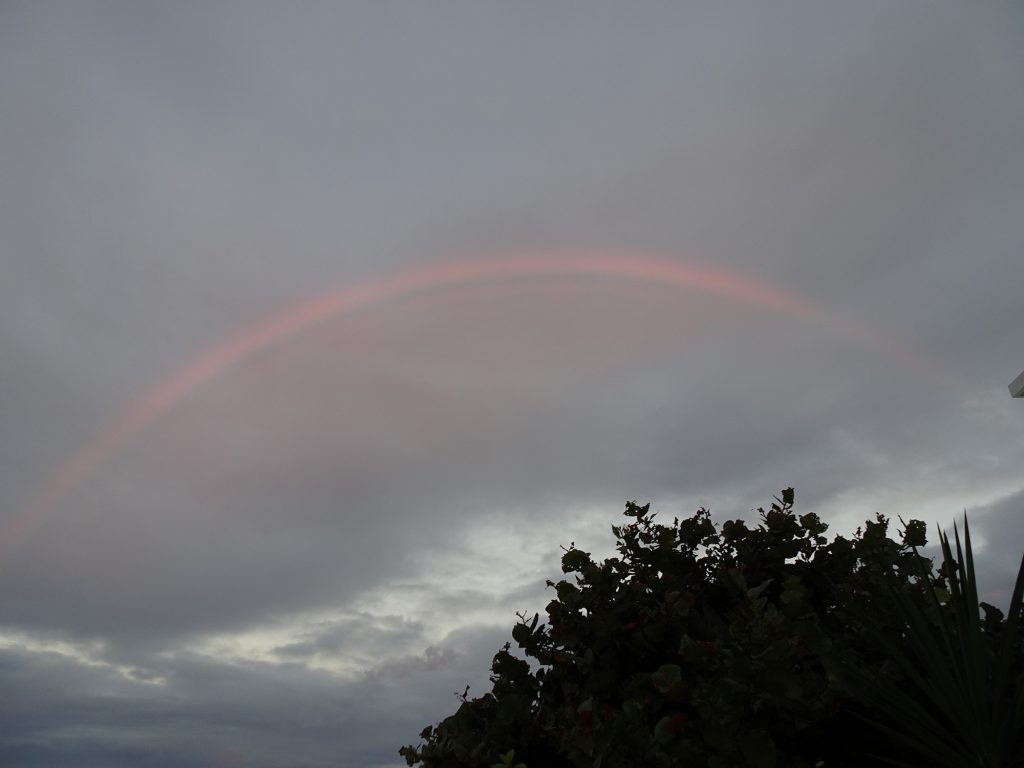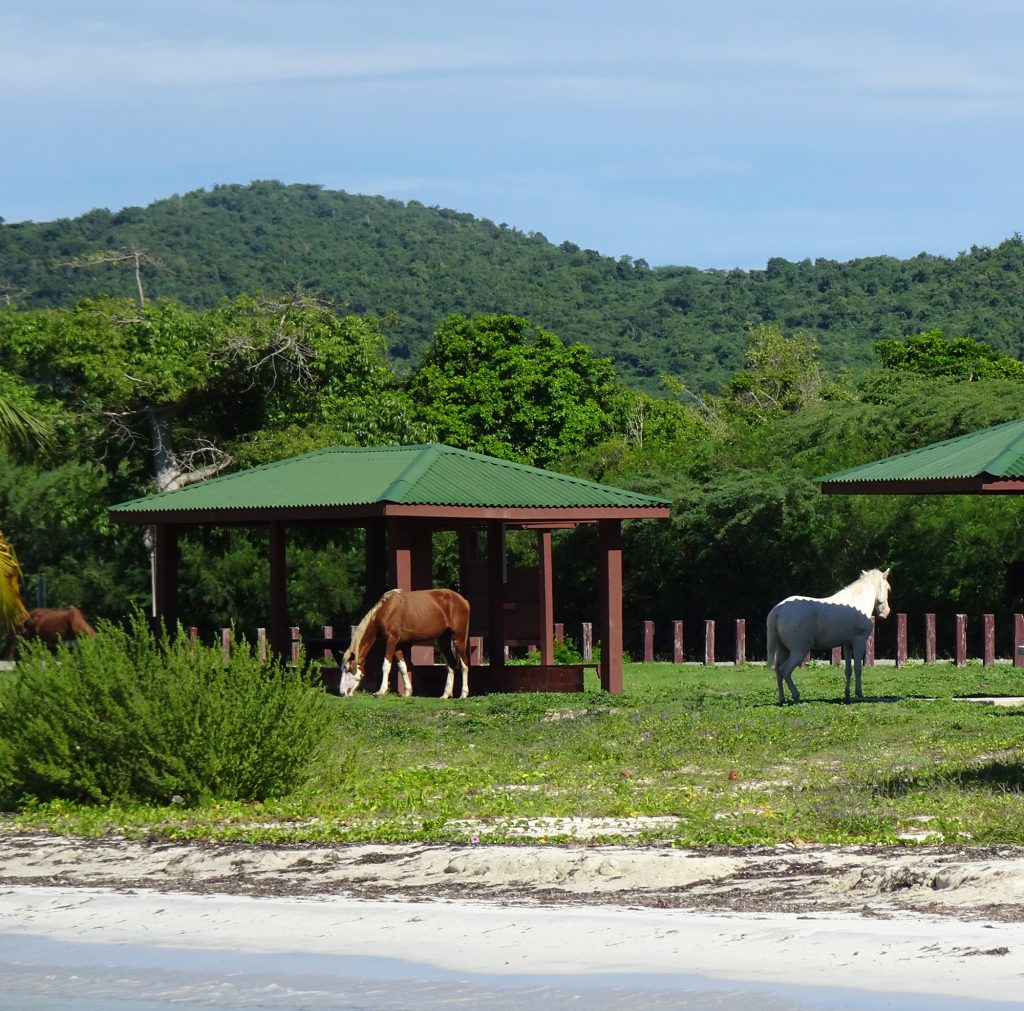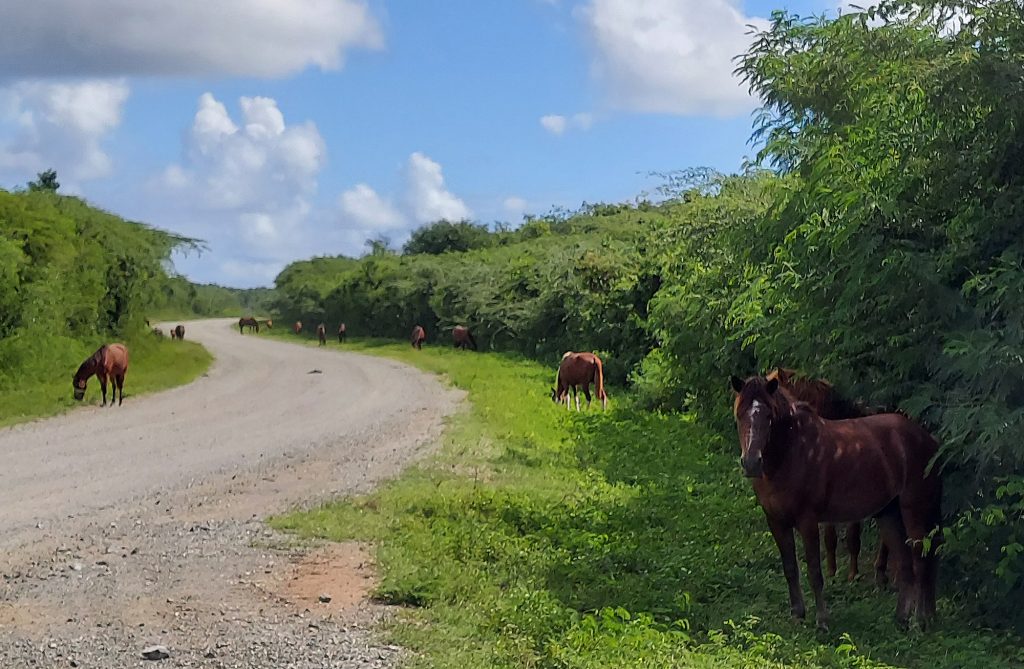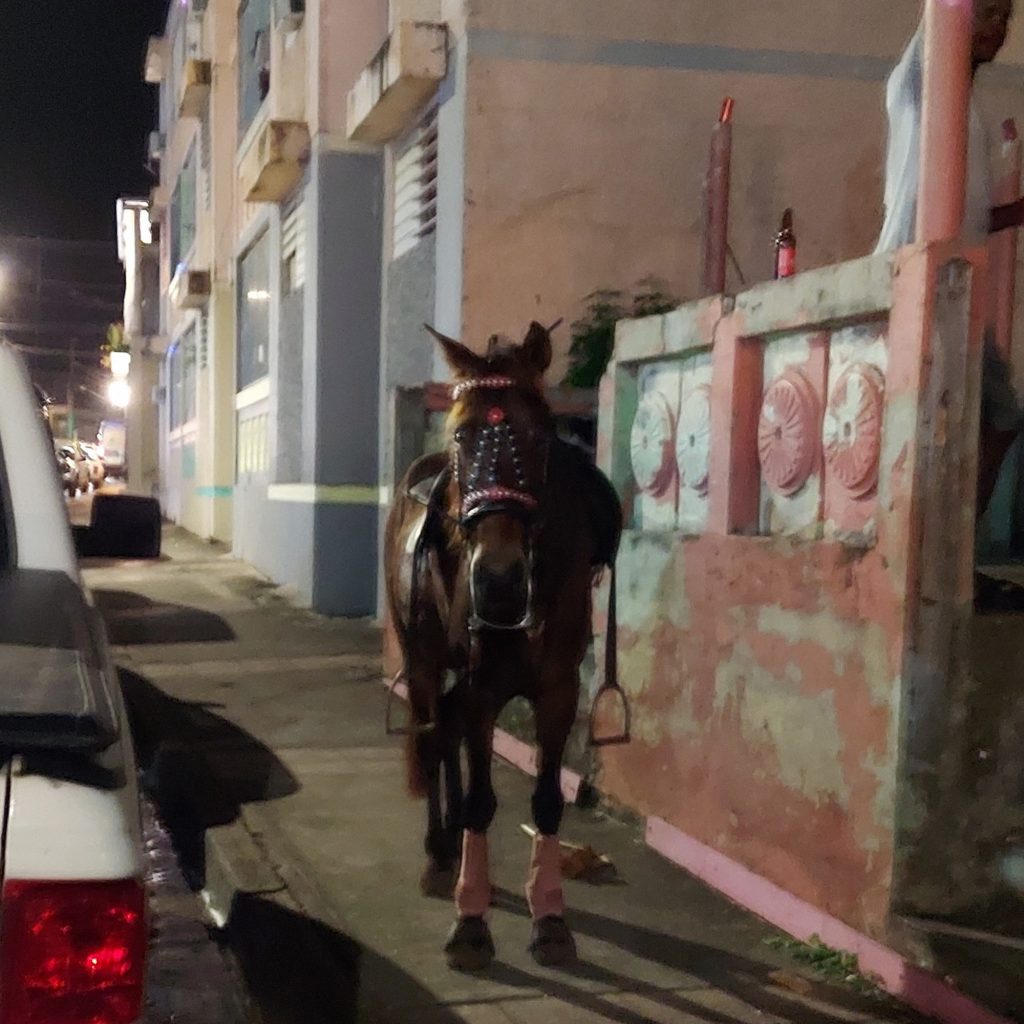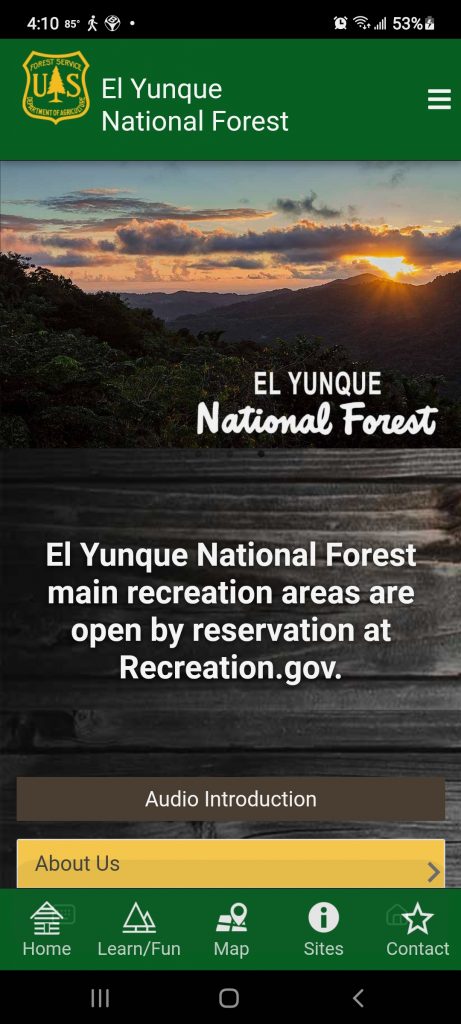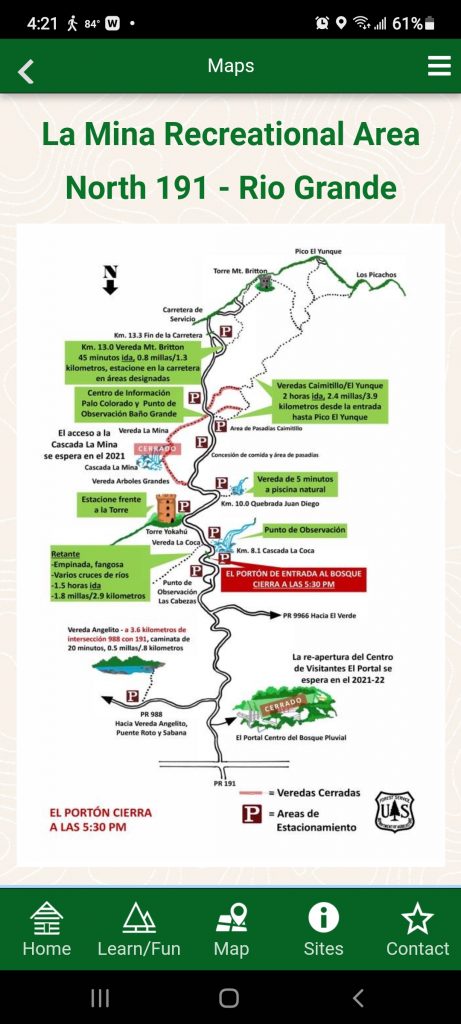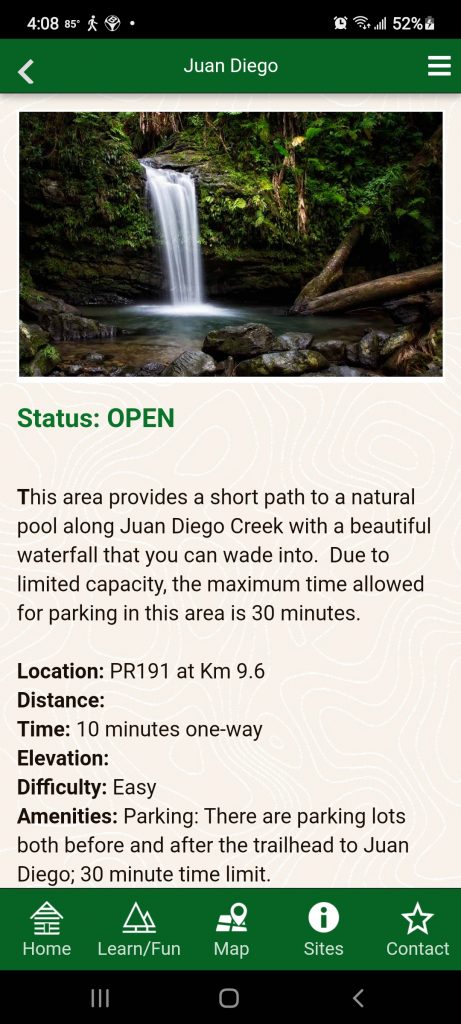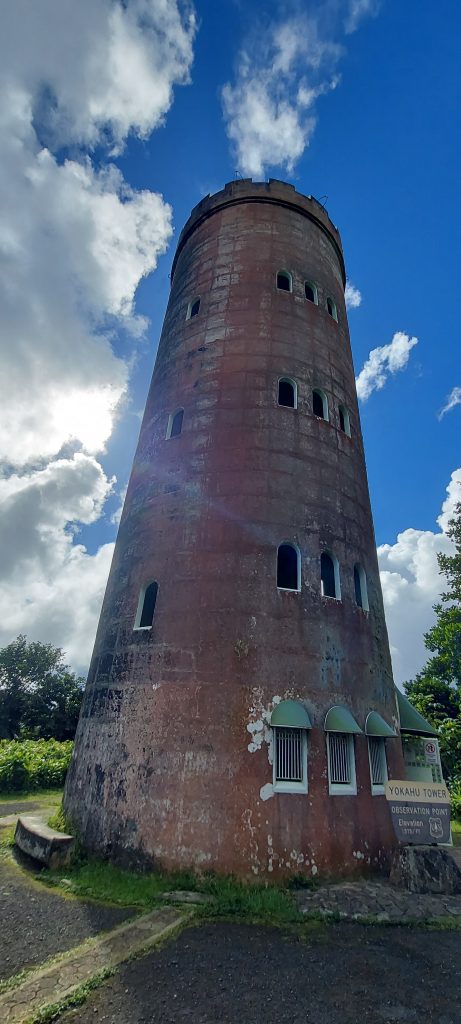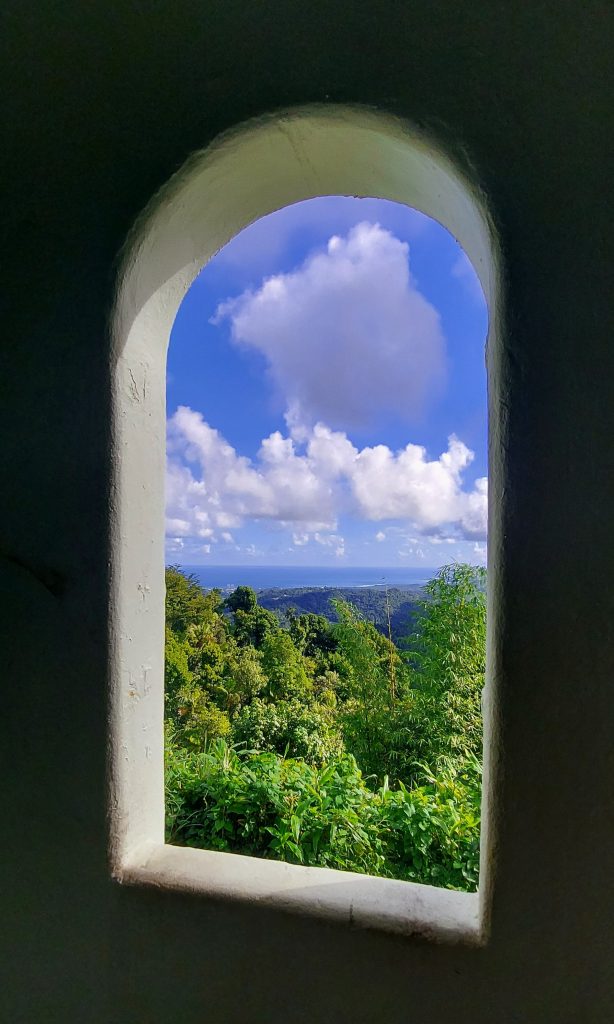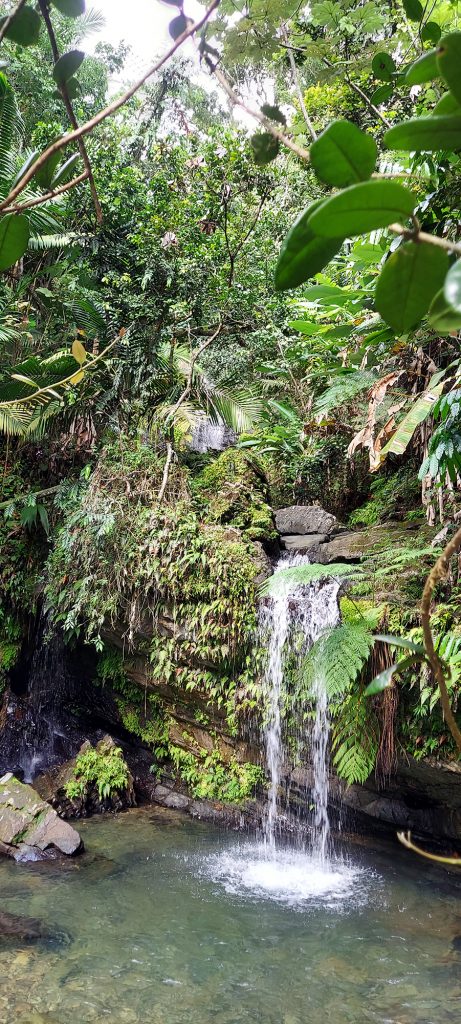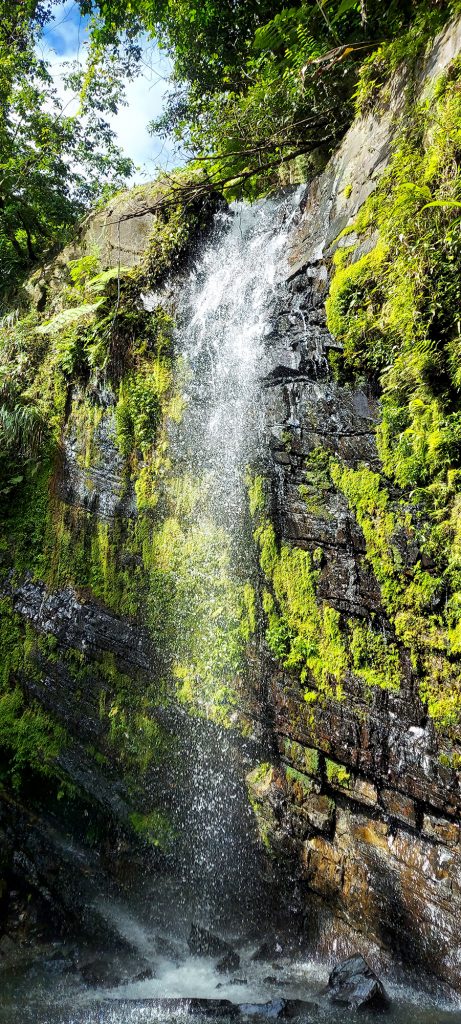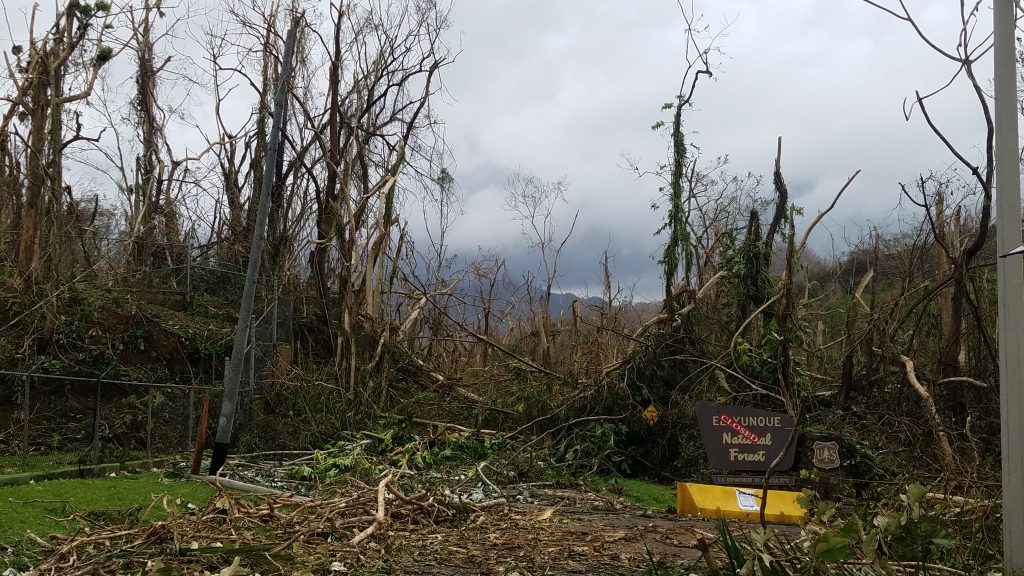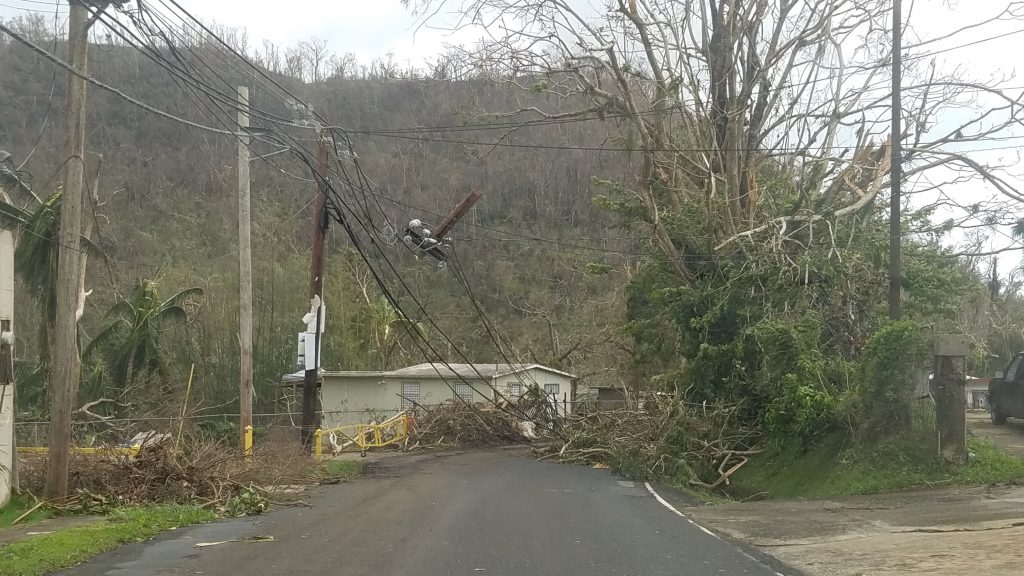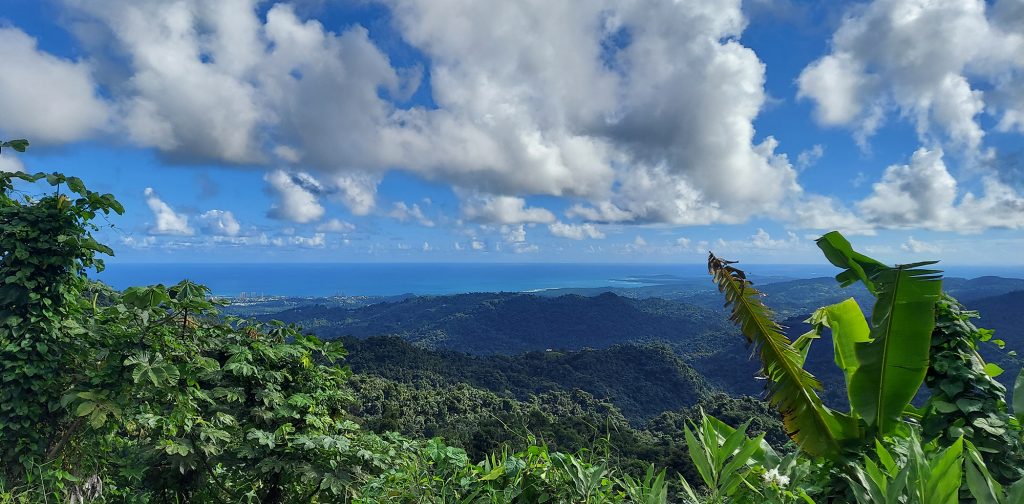How does coffee grow? What does a coffee bean look like? We tasted 787 Coffee in San Juan and had to jump on the first tour of Hacienda Iluminada, where this rich, full-bodied is grown, processed, and roasted. Enjoy the video, and don’t forget to subscribe to our channel!
Isla Vieques (Part 2)
The US Navy and Vieques
When Bob and I lived in Puerto Rico in the 1990s, the US Navy owned a large chunk of Vieques. It had bought 22,000 acres, or about two-thirds of the island, from the native inhabitants in the 1940s, and used 8,000 acres on the western end of the island as a naval ammunition depot until 2001, when the property was returned to the island. You can read the history here, including Vieques residents’ health effects from the Naval presence and protests to force the Navy to leave the island.
But long story short, despite negative effects, the long US Navy presence meant that huge swaths of the island were never developed. So today it is the Vieques National Wildlife Refuge, considered one of the most ecologically diverse refuges in the Caribbean and the largest wildlife refuge in the region.
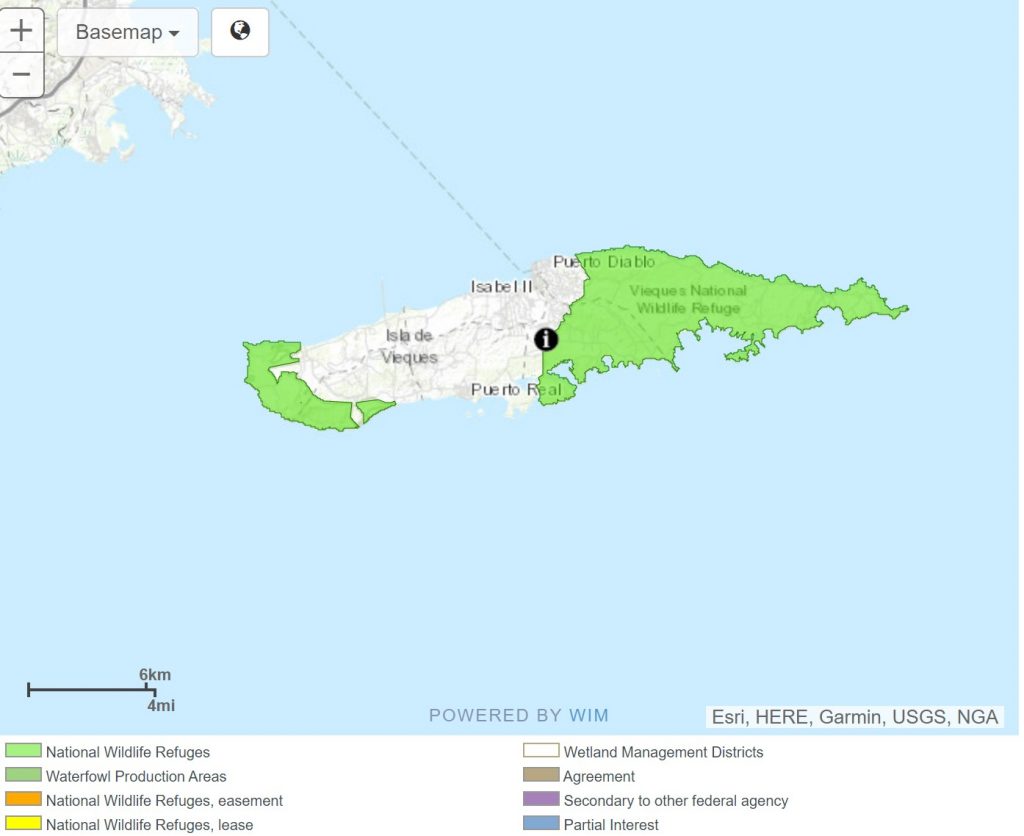
It has beautiful, undeveloped beaches and stellar snorkeling, and a few hiking trails. (Unfortunately, a large chunk of the land is not open to the public because of the danger from possible encounters with unexploded ordnance, which the Navy is slowly cleaning up.)
Beach Hopping & Snorkeling
Snorkeling and pristine beaches are the island’s main draws, and we came with our own gear, prepared to take advantage of both. With only 2½ days to explore, we could barely taste the multitude of beaches started with Chiva Beach (formerly the Naval Base’s Blue Beach), which had a bit of dried sargassum along its shoreline but was still lovely, with clear turquoise water and reefs just a short swim out. There were a number, but we did the best we could! The Vieques Insider website was a great resource for the best places to pull on our fins and masks and wade into the water.
Here are the highlights:
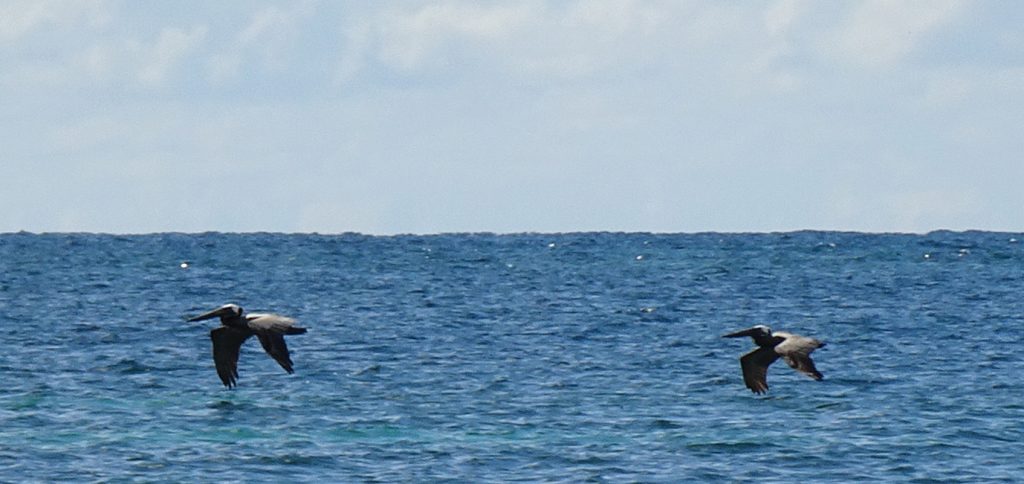
Chiva Beach: We passed a number of individual entrances to the beach, numbered, with parking for just one or two cars at each. We finally chose #10 and settled ourselves in the shade among the mangroves, when a huge iguana pooped spectacularly from a branch behind us. How often do you get to witness that? A little lizard also watched us curiously, and many majestic pelicans flew by.
I snorkeled there and saw some lovely coral and a multitude of undersea life. On my way back into shore, I found myself in the magical middle of an enormous school of dancing silverfish.
Caracas Beach: Caracas is a larger beach on a bay with lovely, calm water for swimming, and even parking, shelters, and even a bathroom, something the smaller beaches were lacking. There we relaxed on a concrete strip among the trees and watched the visiting horses wander around and forage in the garbage.
In fact, we ran into horses everywhere we went. Also, weirdly, a wild pig.
Esperanza Beach: Esperanza Beach, near the town by the same name on the south coast, is primarily a local hangout, a little grittier than the others because of the parking lot behind us in which men smoked weed and teens hung out, but we enjoyed its charms. Its most striking feature is a deserted concrete pier which provides an eerie, fascinating snorkel experience. You can dart between the coral-encrusted pylons and watch fish swimming in and out among old anchors and piles of thick rope abandoned on the seafloor below. I almost ran into huge purple jellyfish a couple of times. People claimed sea turtles hang out underneath the pier, but we weren’t lucky enough to see any. Kids jump off the pier into the water on weekends.
Black Sand Beach: We had to hike for six-tenths of a mile through lush woods to reach Black Sand Beach, though the GPS first took us down a long, incredibly bumpy, narrow dirt road to a cliff near the beach. Black Sand Beach is so named because it boasts volcanic sand, but we found it to be overhyped. The walk was lovely, but the beach itself was not a place where you would want to hang out, and the so-called “black sand” just made the area look dirty. However, the views of the sea crashing into the cliffs were spectacular. Here’s a video of the beach.
Pata Prieta Beach: Pata Prieta, not far from Chiva, offered some gorgeous snorkeling along the rocky east side of its cove. Among the vast quantity of sea life we encountered while swimming in shallow water above the coral reef, I saw a small barracuda and even an octopus! He was hiding in plain sight on the seafloor, camouflaged among the rocks and plants. I only recognized him because I had seen the documentary My Octopus Teacher on Netflix. He crept along as I watched him, before finally deciding to launch himself and swim away, shedding his rocky camouflage and revealing himself to be a translucent orange swimmer.
Bioluminescent Bay Tour
The highlight of our trip was the touristy experience everyone needs to have, a Bioluminescent Bay Tour. We went out in transparent double kayaks the first night to see the brightest bioluminescent bay in the world with Taino Aqua Adventures. Our guide, Kevin, took us out into Mosquito Bay in the darkness of a waxing moon under mercifully cloudy skies, and the water shimmered green, blue, or white (depending on your vision) with every stroke of the paddle. The water also sparkled underneath the boat as we moved through the inky water. It was magical!
But actually, it was science. Kevin explained that the luminescence in the bay is caused by a microorganism, the dinoflagellate Pyrodinium Bahamense, which glows whenever the water is disturbed, leaving a trail of neon blue.
Sorry, because of the darkness and the fact that our hands were busy paddling, we were not able to get any photos or video. You can see what it looks like on Taino Aqua Adventures’ website.
We have so much more to share, but I think you are just going to need to visit Vieques yourself!
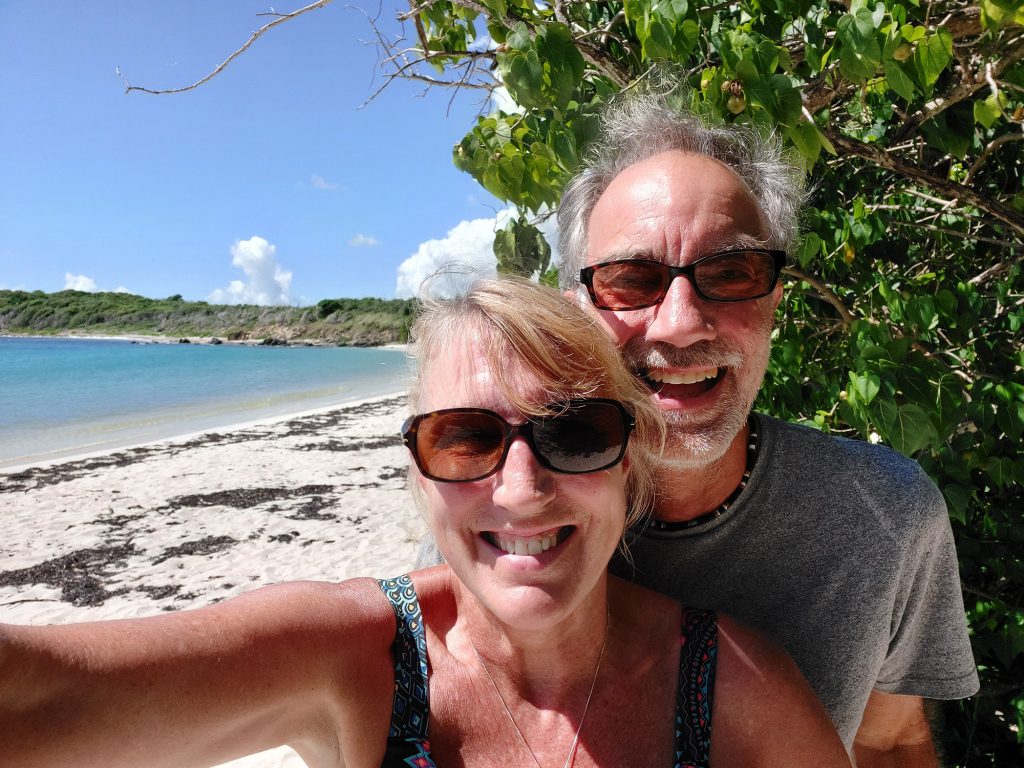
Here are some resources to get you started:
Switching Homes in Puerto Rico
We just spent a glorious month in the northeast coastal town of Luquillo, Puerto Rico. When we left our seventh-floor condo with its glorious view of the ocean after a month’s stay, we thought sadly that there was no way our next place could possibly be as good. Especially since it was in San Juan, a metropolitan area, instead of an idyllic beach town.
We were wrong.
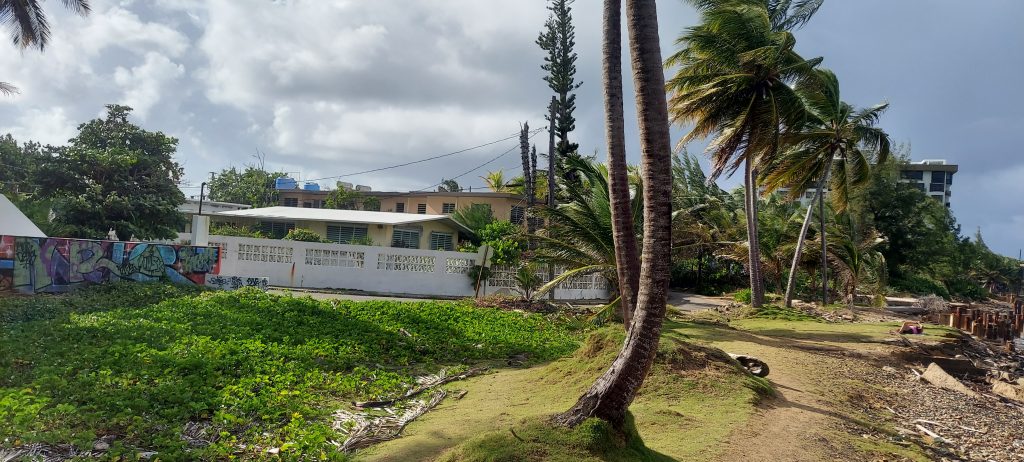
I Hate Halfways
I always have trouble with the concept of “halfway.” Any time I’m on vacation, I get a little depressed when we pass the midpoint. In my mind, every minute from then on takes me a step closer to the end of vacation.
So we have one month left of our stay in Puerto Rico, and that meant moving to our second residence, just 40 minutes west. When we pulled into the driveway of 6 Calle Villa Internacional at Punta Las Marias, a coastal residential neighborhood at the eastern edge of San Juan, we were greeted by John Lombardo, the gregarious American who owns this house, his friendly old dog Lola and cat Putzie. He immediately made us feel at home, giving us a tour of the property and our apartment.
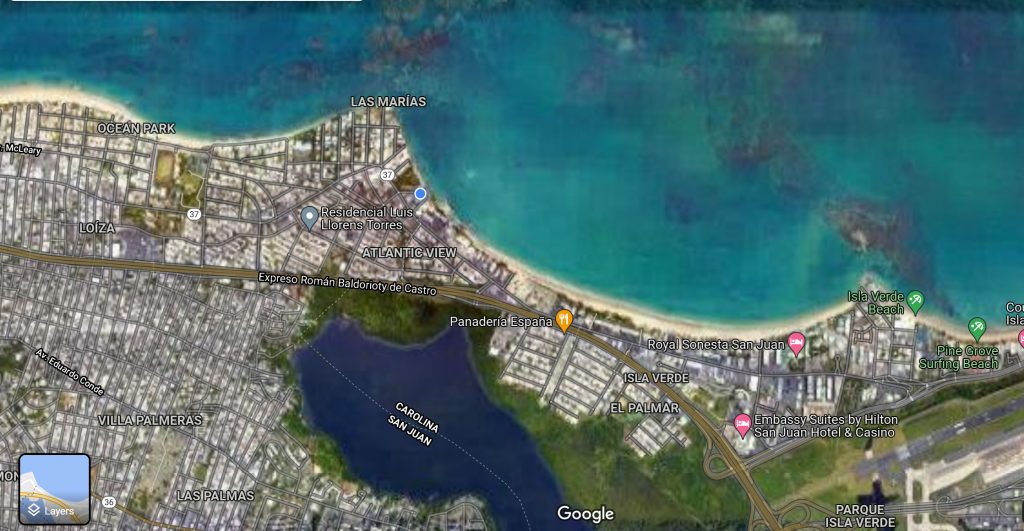
There are actually four apartments in two adjacent houses united by a covered courtyard. John and his wife Sylvia live in the front building, and there are two units on the ground floor. As he led us to ours, Kaylee in tow in her travel crate, we passed several comfortable seating areas, a desk and chair, two hammocks, and a barbecue grill. Kaylee hissed at the curious cat and dog as they sniffed at her before we ascended the stairs to our apartment.
And what an apartment!
It exceeded all expectations.
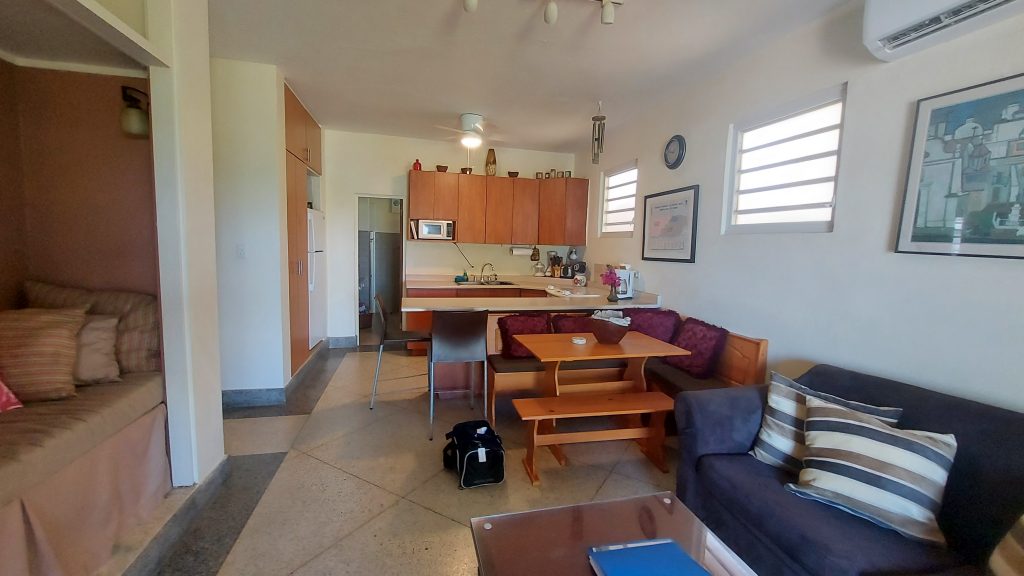
First of all, the ocean is crashing against the rocks literally 50 feet from our front door. Salty breezes chase each other through the apartment. The unit is huge, with two large bedrooms, two large bathrooms, and a generous living/dining/kitchen.
The master bedroom has a king-sized bed, a sitting area, a large desk, and a huge walk-in closet.
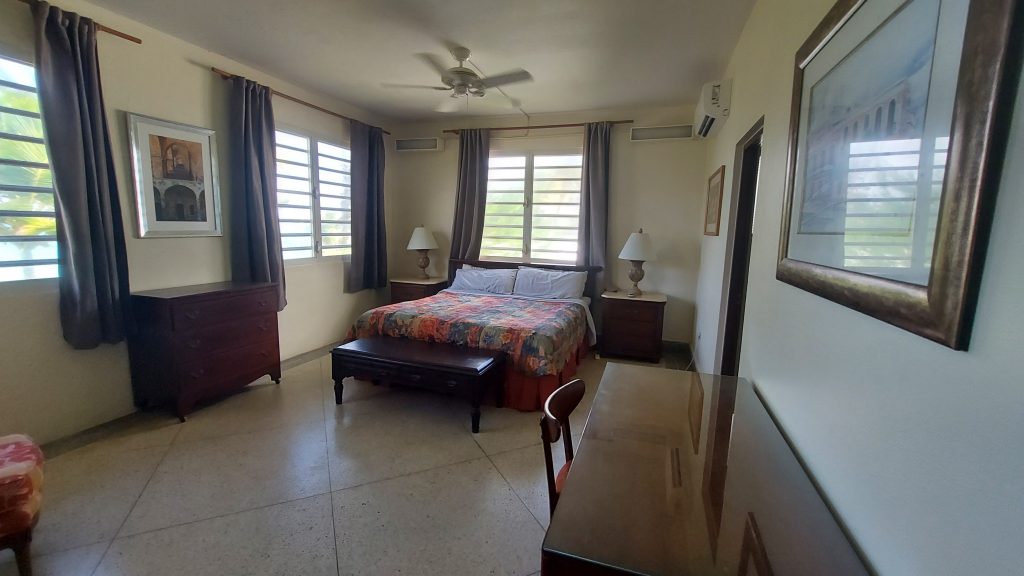
The second bedroom, which Gavin will use when he comes home for Thanksgiving next week, has a queen-sized bed (which Kaylee the cat immediately claimed) and a desk (which Bob immediately claimed).
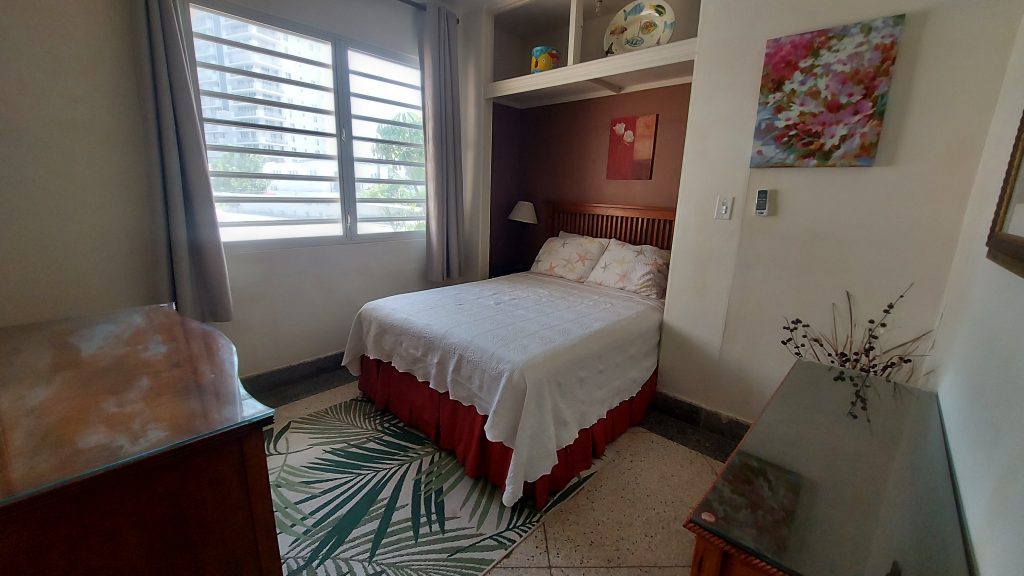
Kaylee also loves the little rug in the living room. When we were in Luquillo, it took her a month to relax into the place. Here she has immediately adjusted.
The piece de resistance for me is the reading nook next to a bookshelf.
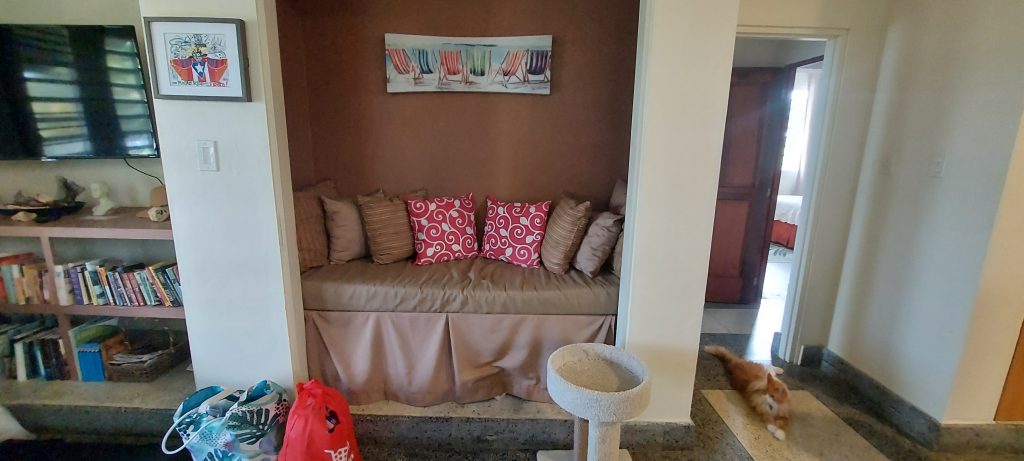
Great Location
We can walk out to the ocean, turn right, and walk to Isla Verde Beach. We’re a block off Calle Loiza, a street famous for its huge variety of restaurants and coffee shops. There’s an ice cream shop on the corner and a coffee shop with the best brunches in town a block away. Even the grocery store is within walking distance. Old San Juan is a 15-minute drive.
Visiting Cat
Putzie keeps dropping by to visit. A couple of days ago she licked my yogurt bowl clean on the patio and Kaylee hissed at her through the screen. This morning she returned and peed on the pavement and rug right outside the door, marking the territory as hers. We’ll keep you posted on the kitty drama.
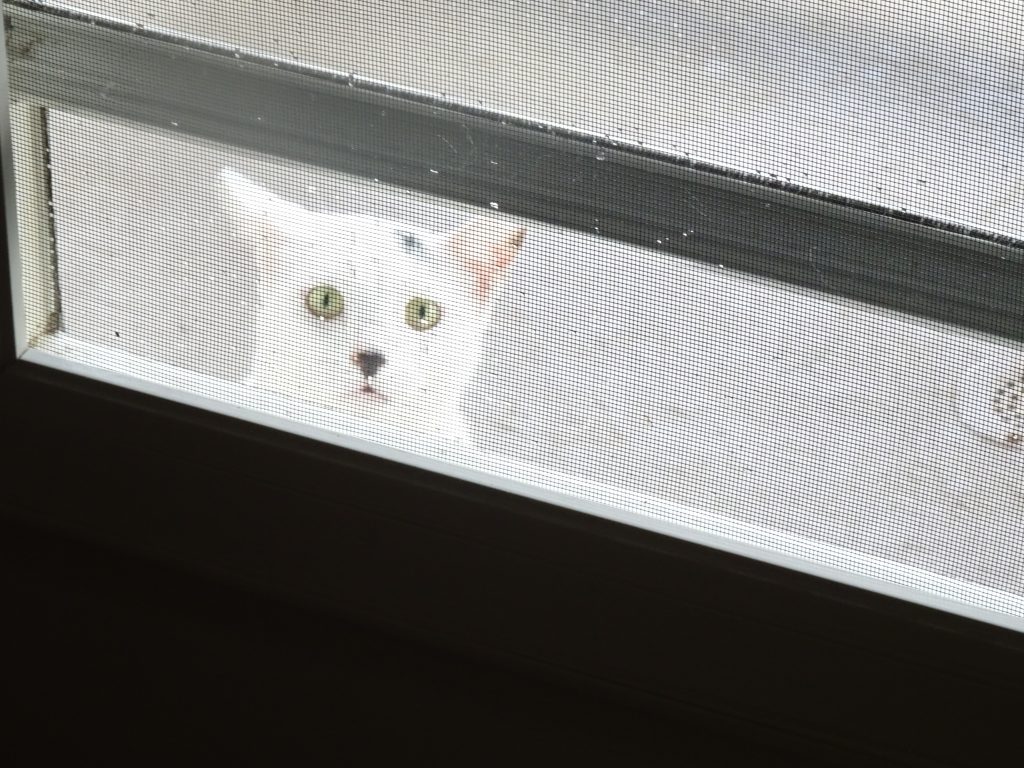
I think we’re going to be happy here. Kaylee certainly is. This place just feels like home.
Isla Vieques: Wild Horses, Snorkeling, and a Bioluminescent Bay (Part 1)
Who would expect to have to stop for wandering horses when driving along a dirt road on a Caribbean island? Or to see swirls of neon blue when you dip your kayak paddle into an inky bay at night? Or to see a cluster of plants and rocks on the seafloor start moving, only to realize that clump is actually a creature?
Surprise! That’s the best word to describe the island of Vieques.
To the uninitiated, Puerto Rico is a popular Caribbean vacation destination, a bigger island than most. But most people are unaware that PR is actually made up of a number of islands. The two largest (besides the mainland), Vieques and Culebra, are tropical paradises sitting a few miles off the east coast, their natural wonders just waiting to be discovered.
We visited the larger one, Vieques, this week and will spend a couple nights on Culebra in December.
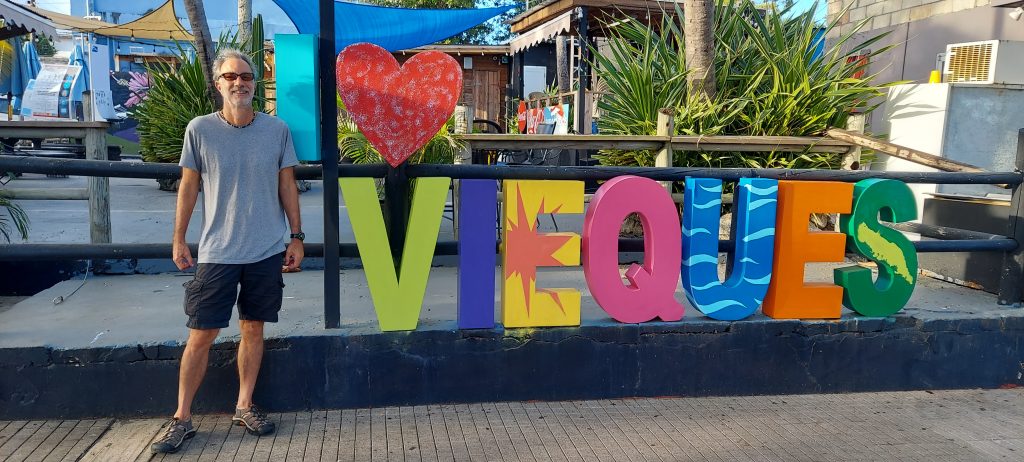
Bienvenidos a Vieques!
Getting to Vieques
Vieques is located just 7 miles off the east coast of Puerto Rico. You can take a ferry to get there, but we opted for a ten-minute flight on Vieques Air Link from the east coast airport of Ceiba. The flight was $80 round-trip, much more expensive than the $4 R/T ferry ride. But the ferry can be unreliable, waits can be long, and the water can get very rough, inducing seasickness – unless you’re truly unlucky and can’t get on board at all. Get more info here.
We chose comfort, convenience, and guaranteed seats – which meant packing like sardines into a tiny 8-seat plane for the eight-minute flight. There are also flights to Vieques from two airports in San Juan, but which are more expensive. There are also several air providers, but we chose the local one, Vieques Airlink. Get more info here.
Exploring Vieques
People don’t go to Vieques for nightlife. They go for the nature. The island is quiet, lush, and uncrowded, with unmatched natural beauty. Vieques is home to the brightest bioluminescent bay in the world, Mosquito Bay. Travelers will discover countless undeveloped beach coves, as well as the largest natural wildlife refuge in the Caribbean. They’ll also discover rough, bumpy roads, which is why renting a 4WD vehicle is essential.
Vieques is 20 miles long and four miles wide. The Atlantic Ocean crashes against its rocky shore on one side, while the Caribbean Sea gently laps the golden sand beaches on the other.
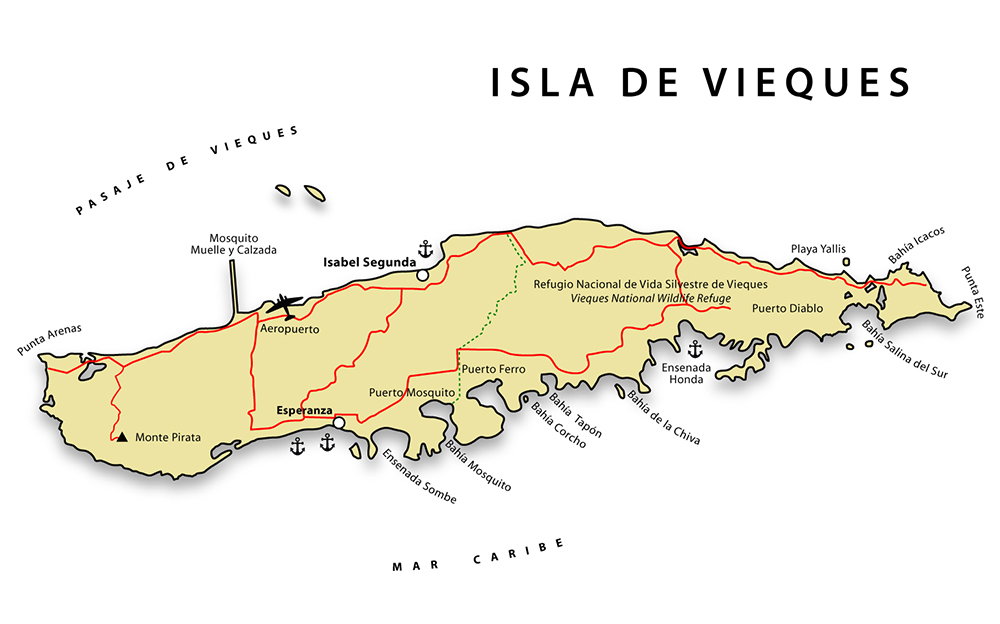
The island has two main towns — Esperanza on the Caribbean coast and Isabel Segunda on the Atlantic coast. Between them, stretching west to east, are lush mountains crisscrossed by narrow dirt roads, with a jumble of colorful concrete houses built to weather hurricanes and the beating sun.
Isabel Segunda, to the north, has all the resources islanders need for their day-to-day lives — a couple of small supermarkets, a few gas stations, Town Hall, the main Plaza, the Ferry Terminal, and a bunch of restaurants and shops.
Esperanza, to the south, has a more bohemian island-life vibe, with a number of open-air bars and restaurants boasting overprices pina coladas and American barmaids, facing a malecon (kind of a boardwalk, only built Caribbean-style with concrete instead of wood) along the coast with spectacular views of Esperanza Bay. Esperanza has a beach within walking distance, making it possibly a better choice if you choose (or are forced) to come to Vieques without a vehicle.
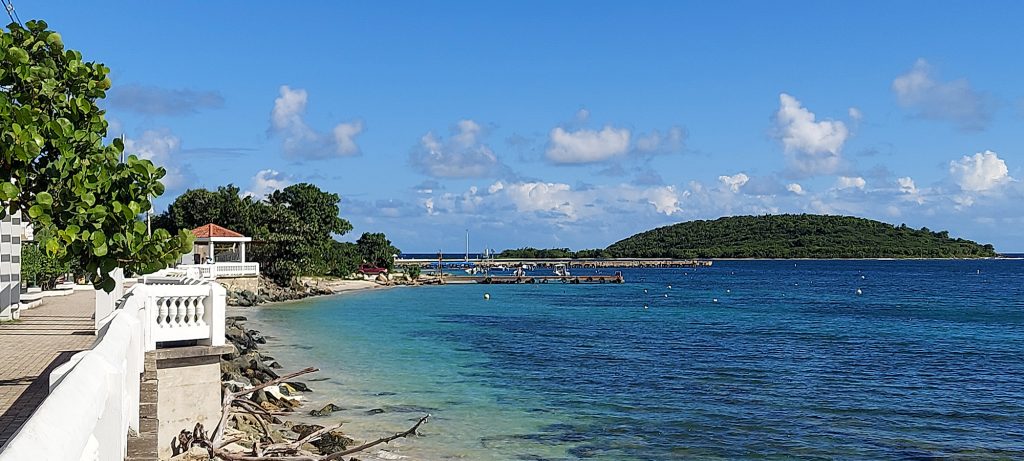
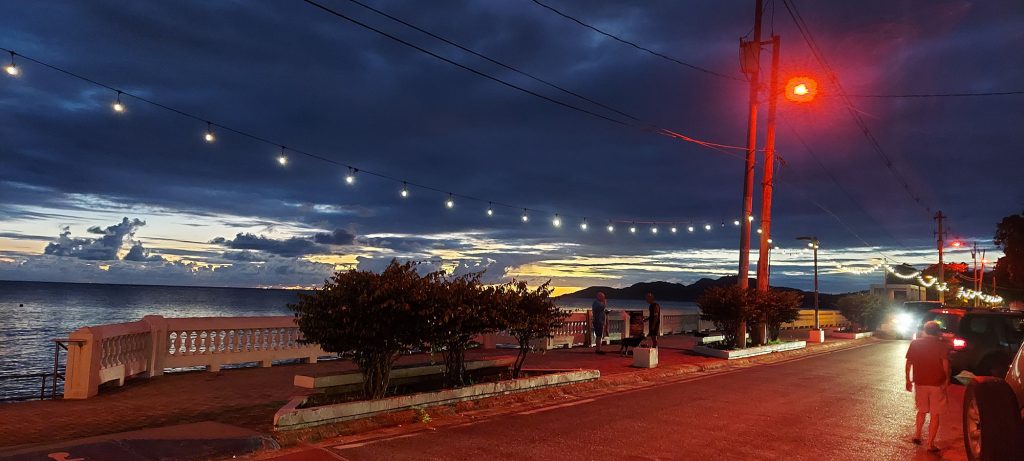
All over the island, businesses and homes are painted with colorful murals featuring mermaids, iguanas, horses, and tributes in memory of lost relatives. It’s a truly charming place.
Getting Around
There is no public transit on Vieques, and we read that taxis don’t like going to the deserted beaches, and may not be available to bring you back at the end of the day. So unless you stay in Esperanza, which has lots of restaurants and several beaches within walking distance, you need to rent either a golf cart or a 4WD vehicle. Why 4WD? Because some of the roads to the beaches, like the one to Black Sand Beach, are car-swallowingly big.
The biggest piece of advice we got about rental cars was to book your car first, then build your vacation around it, because there are a limited number of vehicles available. So the availability of this red jeep at Island Jeep and Coqui Car Rental for Nov. 9-11 pretty much decided our timing!
We didn’t regret the expense. A golf cart would have been cheaper, but they only go about 15 mph, and you have no protection from the tropical heat or sudden rainstorms except the small roof. We experienced some very bumpy roads, and Bob enjoyed tooling around in the jeep on them, while I clenched my teeth.
Our Lodging
There are no big chain hotels on Vieques. You’ll find a choice of boutique hotels, guesthouses, Airbnbs, and hostels for the backpacking crowd. We stayed at the Bravo Beach Hotel, a boutique hotel located on the edge of Isabel Segunda. For just $90 a night, we had a spacious room with a queen bed, refrigerator, large bathroom, and little porch with a bench.
This boutique hotel also had two swimming pools, one of which was right next to the ocean, where I was able to witness a couple of stunning sunsets and one incredible rainbow.
The hotel also gave us the use of beach chairs, swim towels, and even a cooler, which turned out to be really useful since the beaches we visited had no amenities.
The hotel wasn’t serving breakfast because of COVID, but we found a place called El Café de Rincon (Coffee Corner) in a food truck park on the other side of town that we really enjoyed.
Horses
Horses roam freely throughout the island, thousands of them. Everywhere you go you will see them: mothers feeding foals on the roadside, herds hanging out in the nature reserve, horses strolling down the main street or passing through a food truck park, islanders riding horses in a choppy trot up hilly, narrow streets. Their omnipresence feels like a return to a simpler time. Learn all about them here; it’s hilarious!
We also saw many roosters, a couple of wild pigs, a couple of huge green iguanas, and countless snowy egrets, pelicans, and other seabirds.
Up next in Part 2 … Beaches, spectacular snorkeling, and the world’s brightest bioluminescent bay!
Exploring El Yunque, Puerto Rico’s Rain Forest
When we gaze south from the outdoor hallway of our condo in Luquillo, Puerto Rico, we behold El Yunque, Puerto Rico’s magnificent rain forest. Usually, its imposing peaks are covered by clouds. Sometimes they are enveloped in gray, and we can watch those storms move across the valley toward us before soaking our parking lot. Days when the clouds part and the peaks reveal their lushness are rare. The clouds dance with the setting sun come evening.
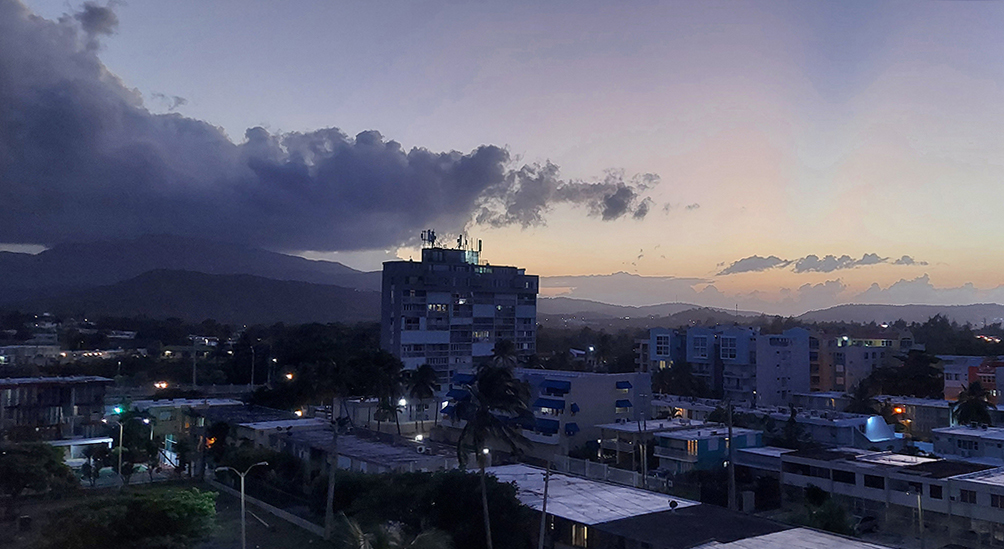
But we were lucky this week. Monday dawned sunny and glorious, with no rain in the forecast, so we pulled on our hiking shoes, water bottles, and cameras and hit the road right after breakfast.
El Yunque (the name literally means The Anvil) is the only tropical rain forest in the US National Forest system. At 28,000 acres, with peaks as high as El Toro’s 3,543 feet, it dominates the eastern end of the island of Puerto Rico. Its split personality can be exciting but challenging. Make sure you pack a rain jacket if you visit, and check the weather first!
Long History
El Yunque and the Luquillo Mountains have a long history that includes pre-Columbian cultures, Spanish colonization, gold mining, and timber exploitation, and the eventual construction of roads and facilities to give the public access to this emerald gem. (Learn about the history.)
The main El Portal Visitors Center has been closed since it was damaged by Hurricane Maria in 2017, but the US Forest Service has created a really useful app that guided us through the park. (You can find it in the Play store under El Yunque NF.)
The App
The app offers maps of the main roads into El Yunque, descriptions of trails, kids’ activities, history and so much more. It’s a must-have resource, especially with the Visitors Center temporarily closed.
Day 1
If we had been visiting on a weekend, we would have had to make reservations (for a service fee of $2) online on the US Forest Service website. However, during the quiet months of October and November, weekdays require no reservations.
El Yunque has three entrances. On our first day exploring, under cloudless skies, we chose to casually meander up PR 191, the main entrance for people driving from San Juan, to the highest peak in our rental car, just to get the lay of the land.
As we drove up the road, palm trees leaned in from both sides, creating a lush canopy above us. Occasionally we would pass crashing cascades of water. The sweet chirp of the Puerto Rican tree frogs called coqui tickled our ears.
Torre Yokahu
This tower is only a few kilometers up, located right near the road and just a short climb up a spiral staircase. The views of the lush mountainside, Luquillo and the turquoise sea were lovely.
Quebrada Juan Diego
Quebrada Juan Diego (San Diego Creek) took us on a short hike to a thundering waterfall with a clean pool at the base. The bottom was rocky, so we decided to come back on another day with good water shoes to take a dip.
Looking through the trees above, however, we saw a second, higher waterfall. Looking around, we discovered a largely hidden path off to the right, and made our way up a steep, twisting rooted vereda (trail) to an even more dramatic second waterfall. It was amazing!
Torre Mount Britton
At the end of PR 191, we found a trailhead for Mount Britton Tower, a steep route to a mountaintop tower that is less than two miles round-trip. We decided that would be a great second hike, and decided to come back in a couple of days to attempt it.
Sierra Palm Snack Bar
Heading back down the mountain, we discovered a sweet little snack bar called Sierra Palm, named after the forest. It had outdoor seats, as well as a path you could follow down to some concrete picnic structures with fireplaces. We enjoyed smoothies (mine mango and passion fruit, Bob’s pina and coconut) and cheese empanadas with guava paste for dipping. Delicious!
Vereda Angelito
To get a quick first hike in, we took a detour on the way home to Vereda Angelito (Little Angel Trail). The description on the app said it was 20 minutes each way and ended at a pool with a rope swing. It was actually much shorter and easier than we anticipated and only took us ten minutes each way. We found a lot of happy families frolicking in the water on a sunny early afternoon.
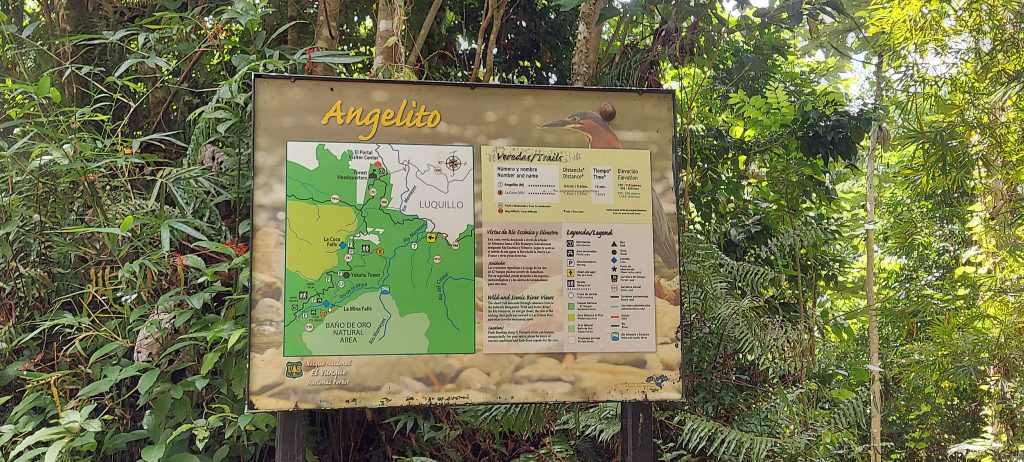
Las Tres C (The CCC)
Most of the trails and structures in El Yunque were built in the 1930s by the Civilian Conservation Corps (CCC), one of Bob’s favorite government initiatives ever. Have you heard of the CCC – or, as they say in Puerto Rico, “Las Tres C”?
The CCC was established in 1933 by President Franklin D. Roosevelt as part of his New Deal program, in an effort to put people back to work after the Great Depression, while improving public lands. In El Yunque, it planted forests, built roads and most of El Yunque’s recreational infrastructure. We found a public pool that was built by the CCC, as well as picnic structures (including the ones below the snack bar), trails, and other buildings. Learn all about Las Tres C.
Hurricanes Irma and Maria
Hurricanes Irma and Maria tore through Puerto Rico in September 2017, wreaking unprecedented havoc on the rain forest, downing trees, shredding branches, and killing birds and animals. These photos from the US Forest Service show some of the devastation.
The Forest Service is still rebuilding, and Mina Falls, one of the most popular destinations at El Yunque, remains closed because of damage to its trails and bridges. A sign we saw said they are also using this rebuilding effort as an opportunity to improve the infrastructure to meet the demand of an increasing number of visitors. You might find this article interesting, which talks about the aftermath of the hurricane and climate change.


